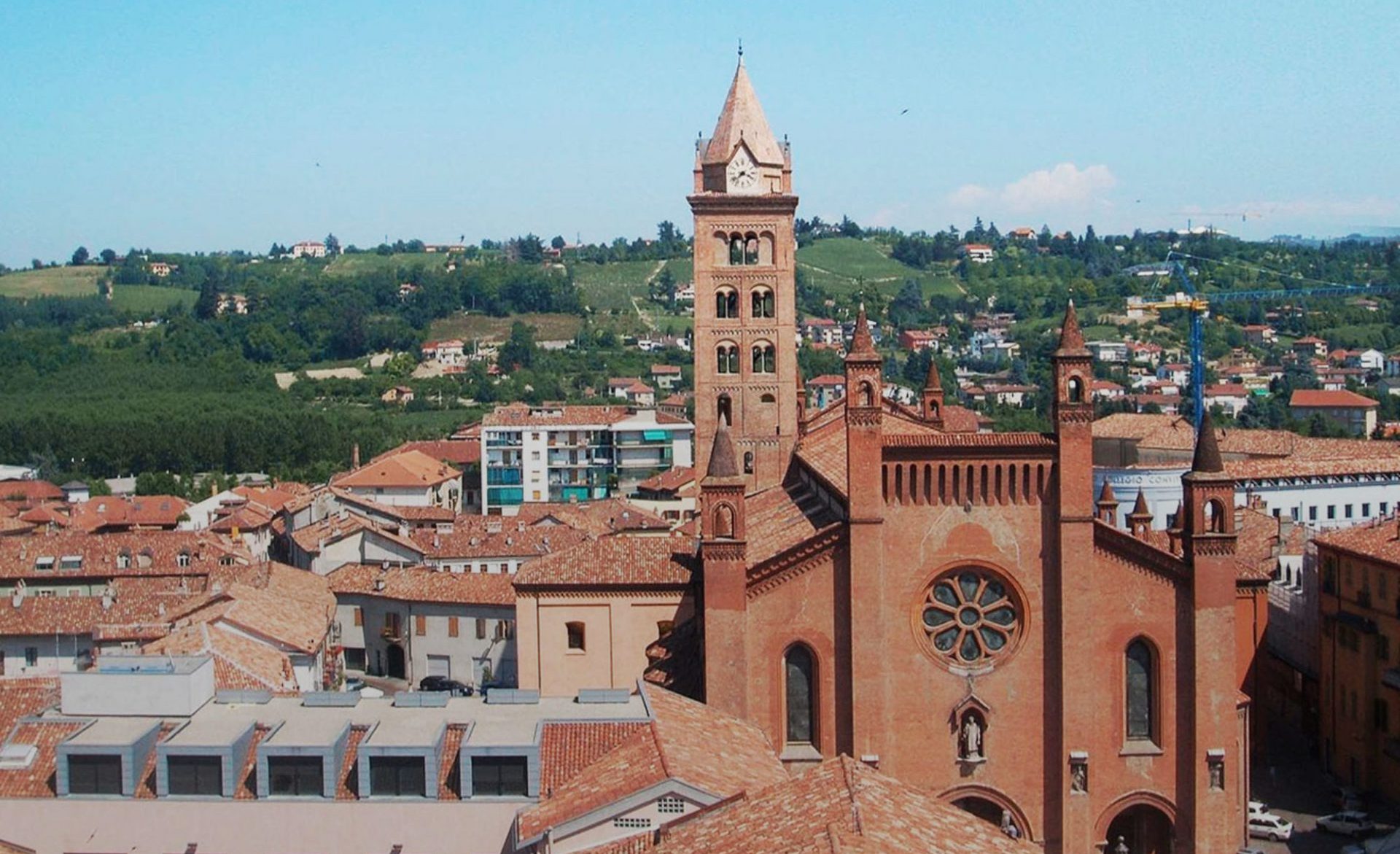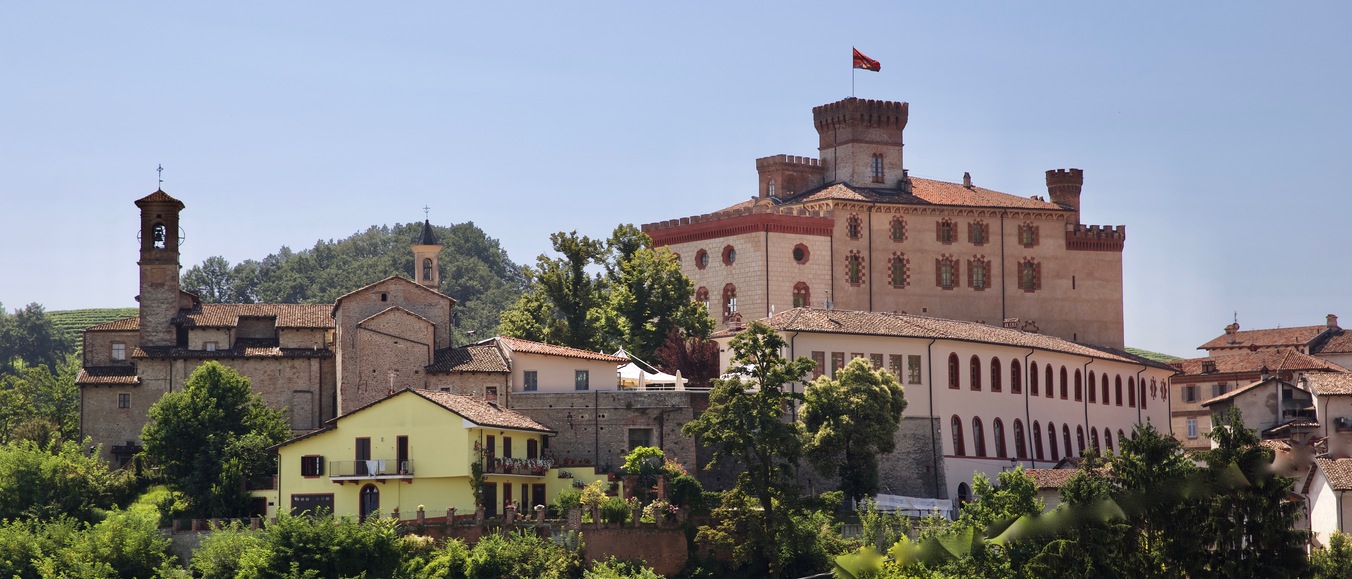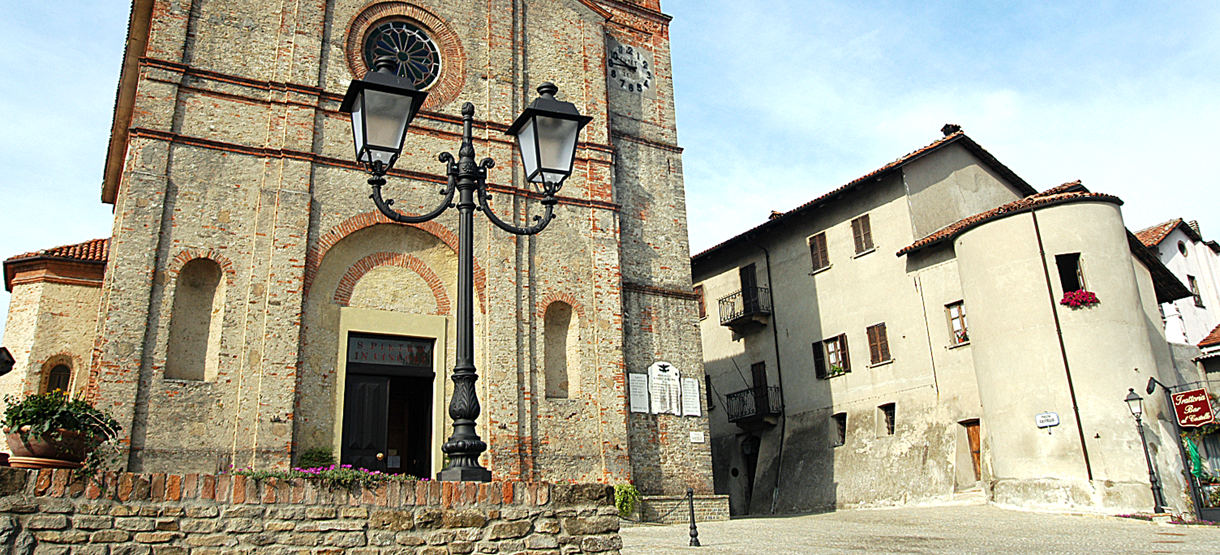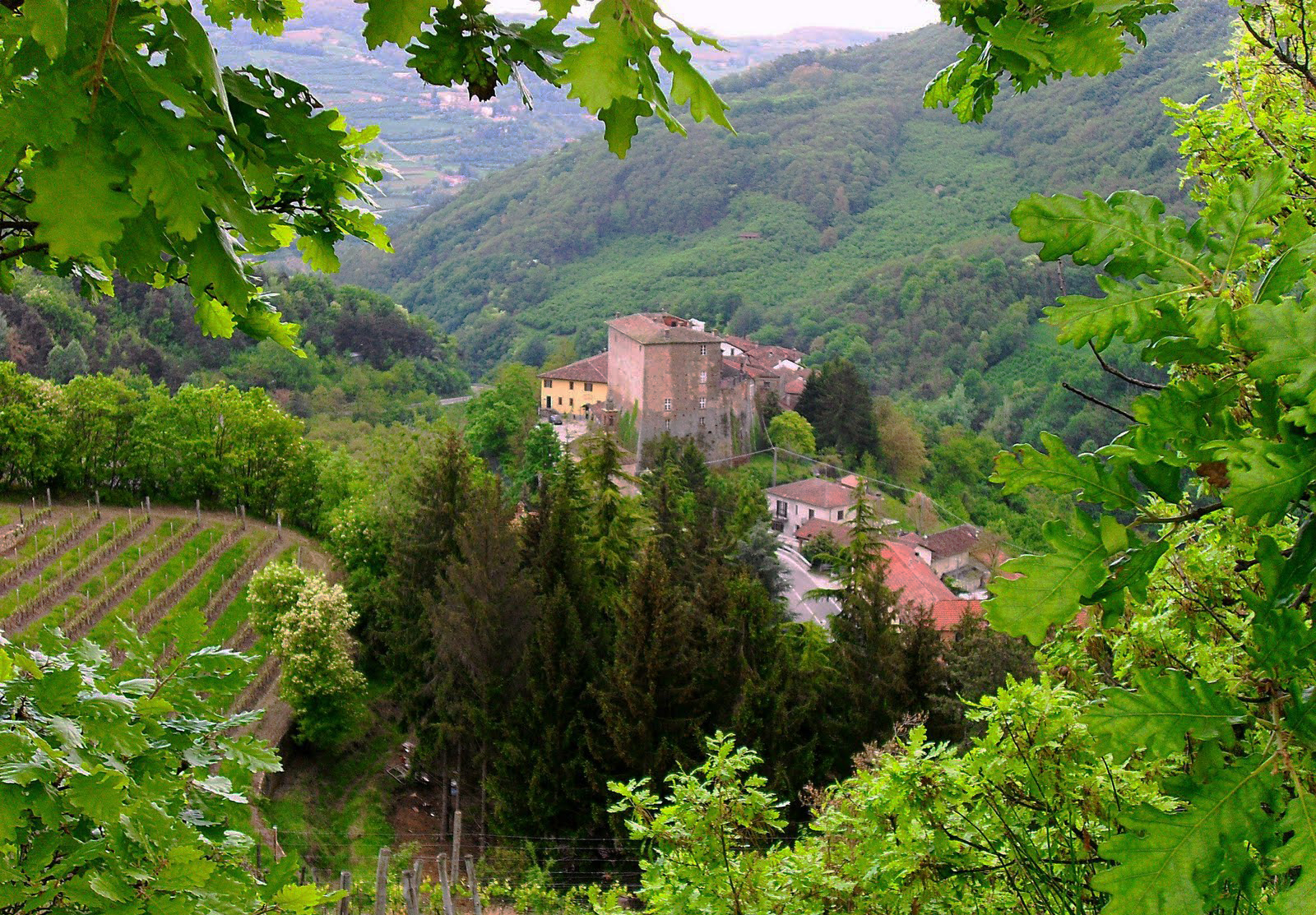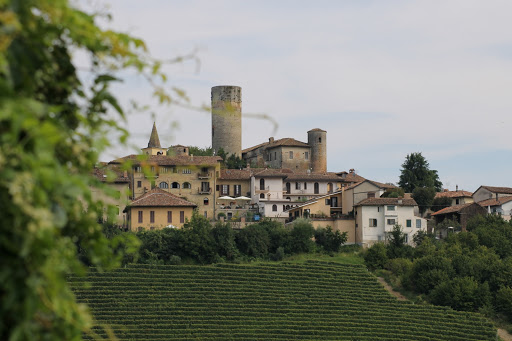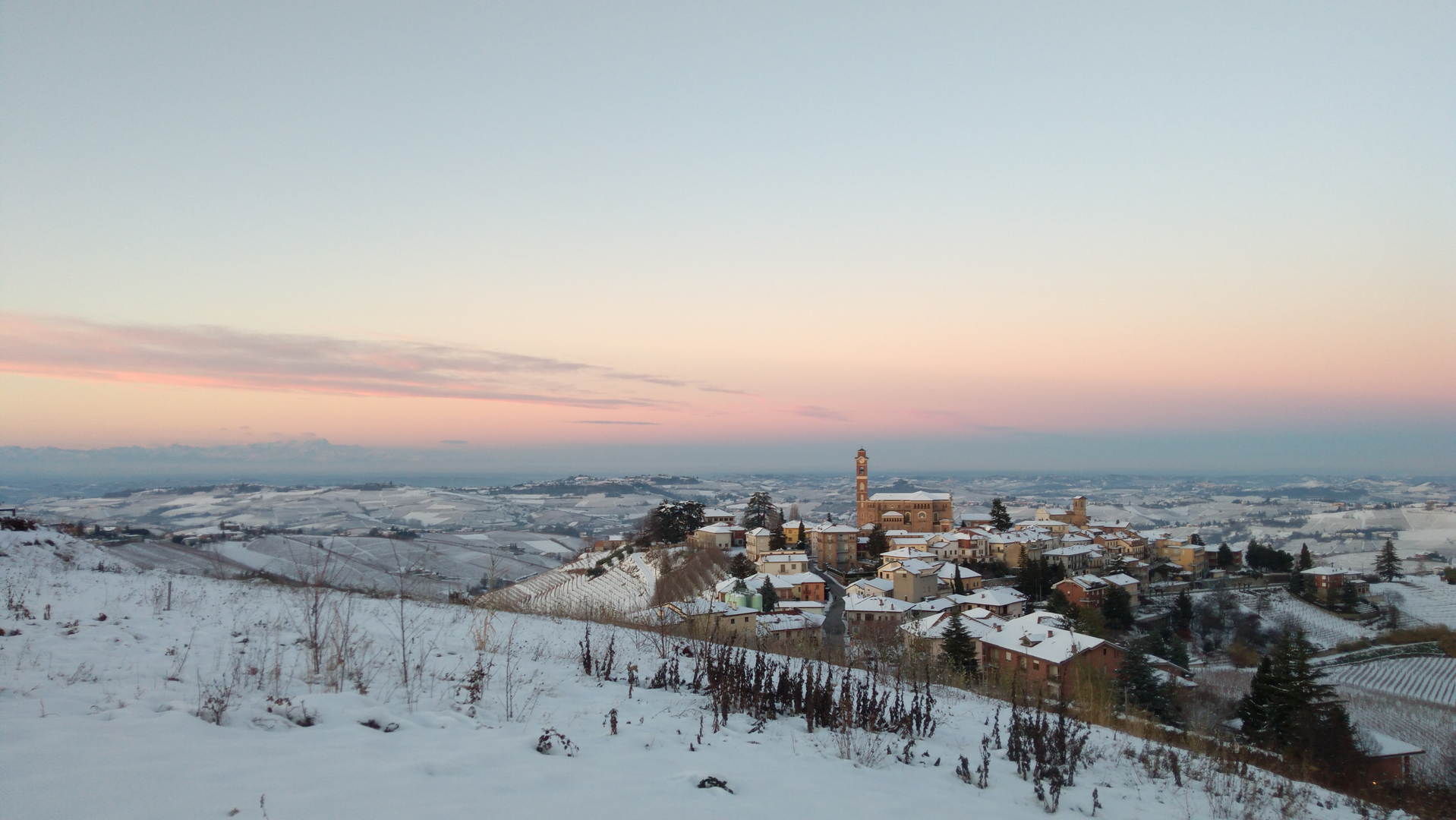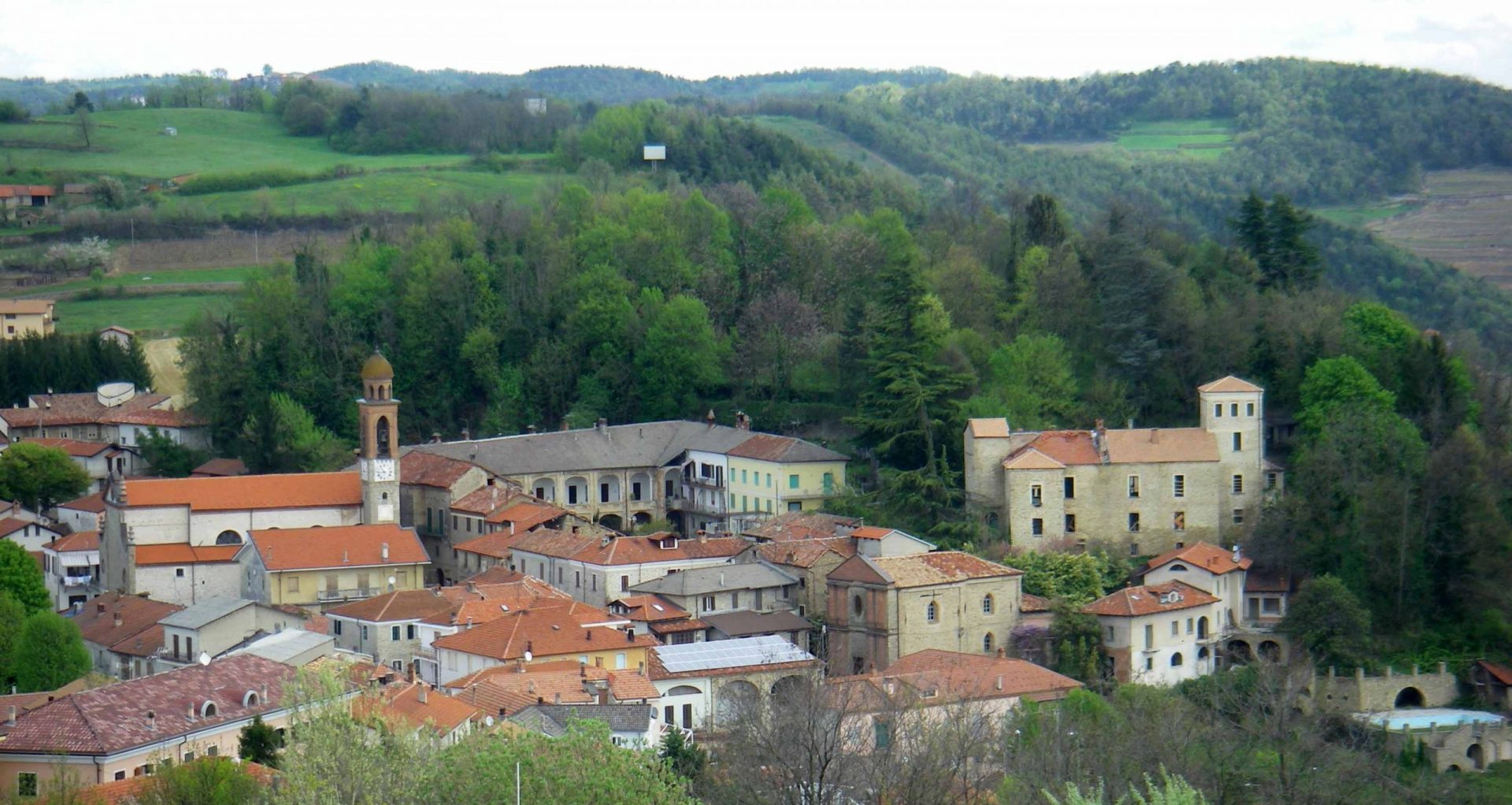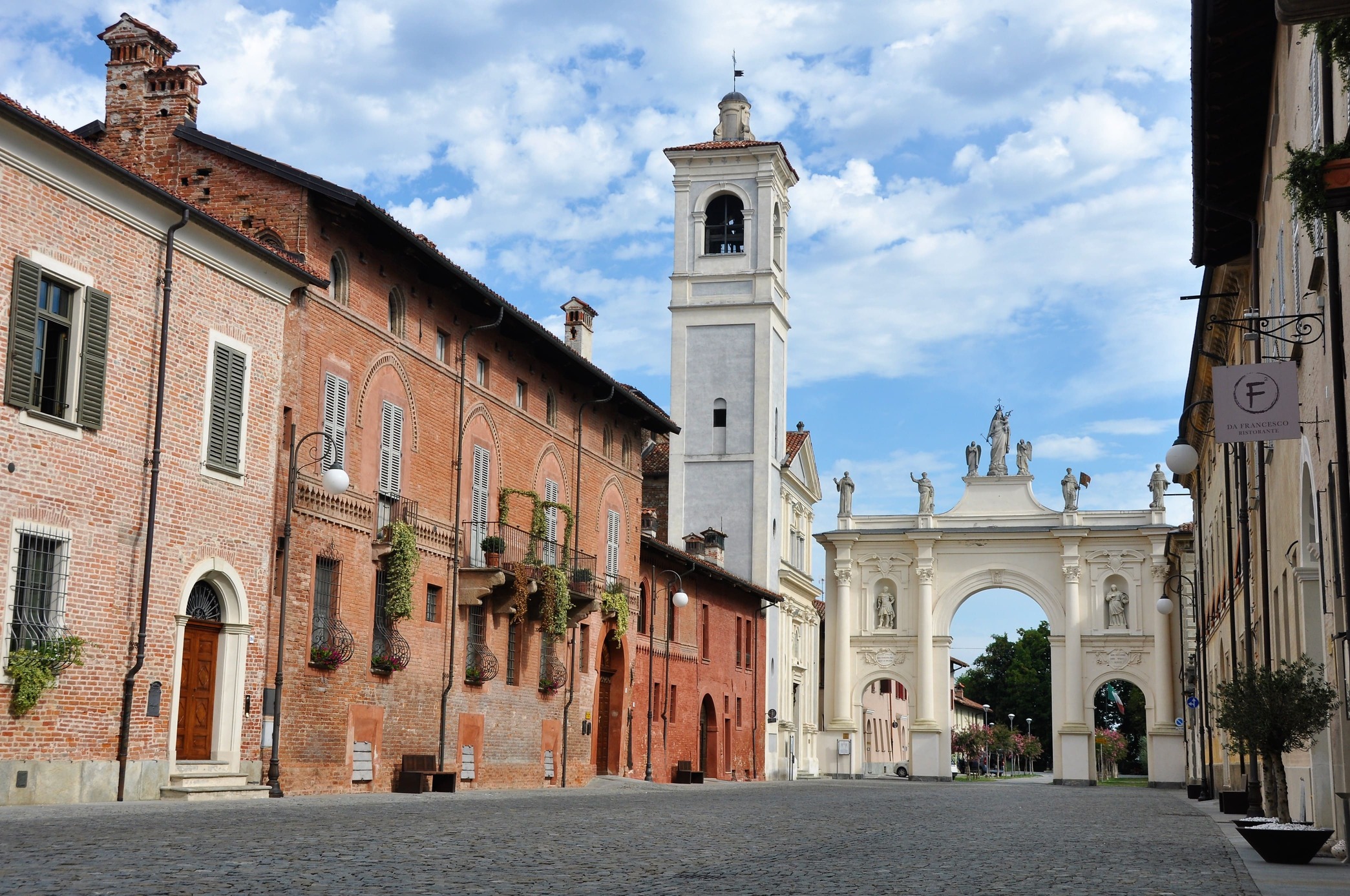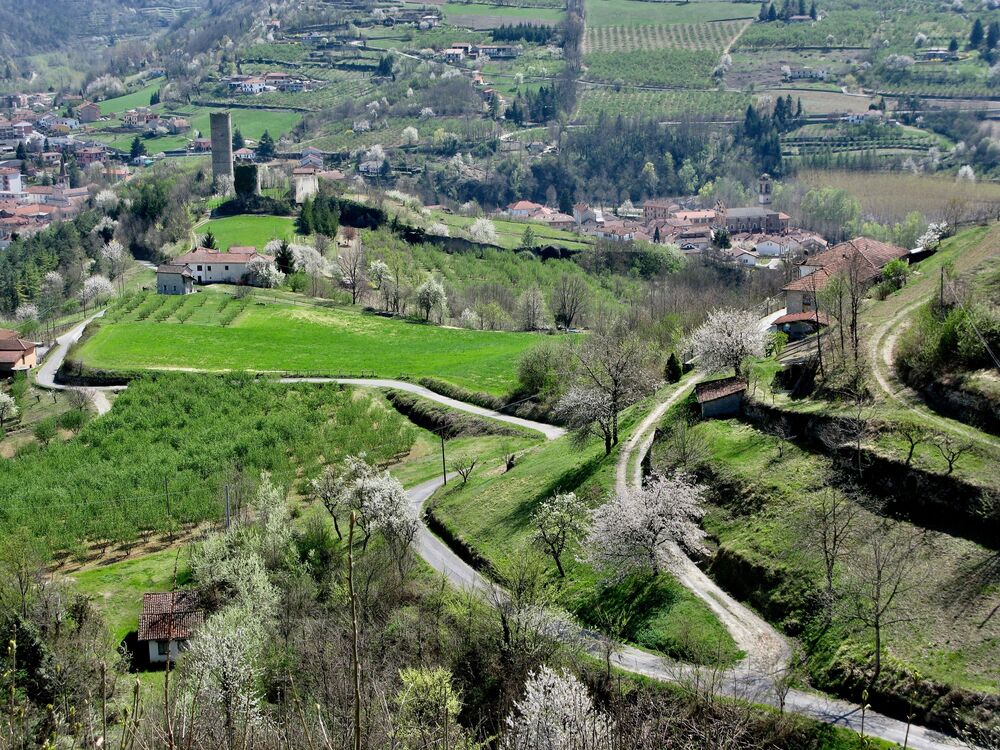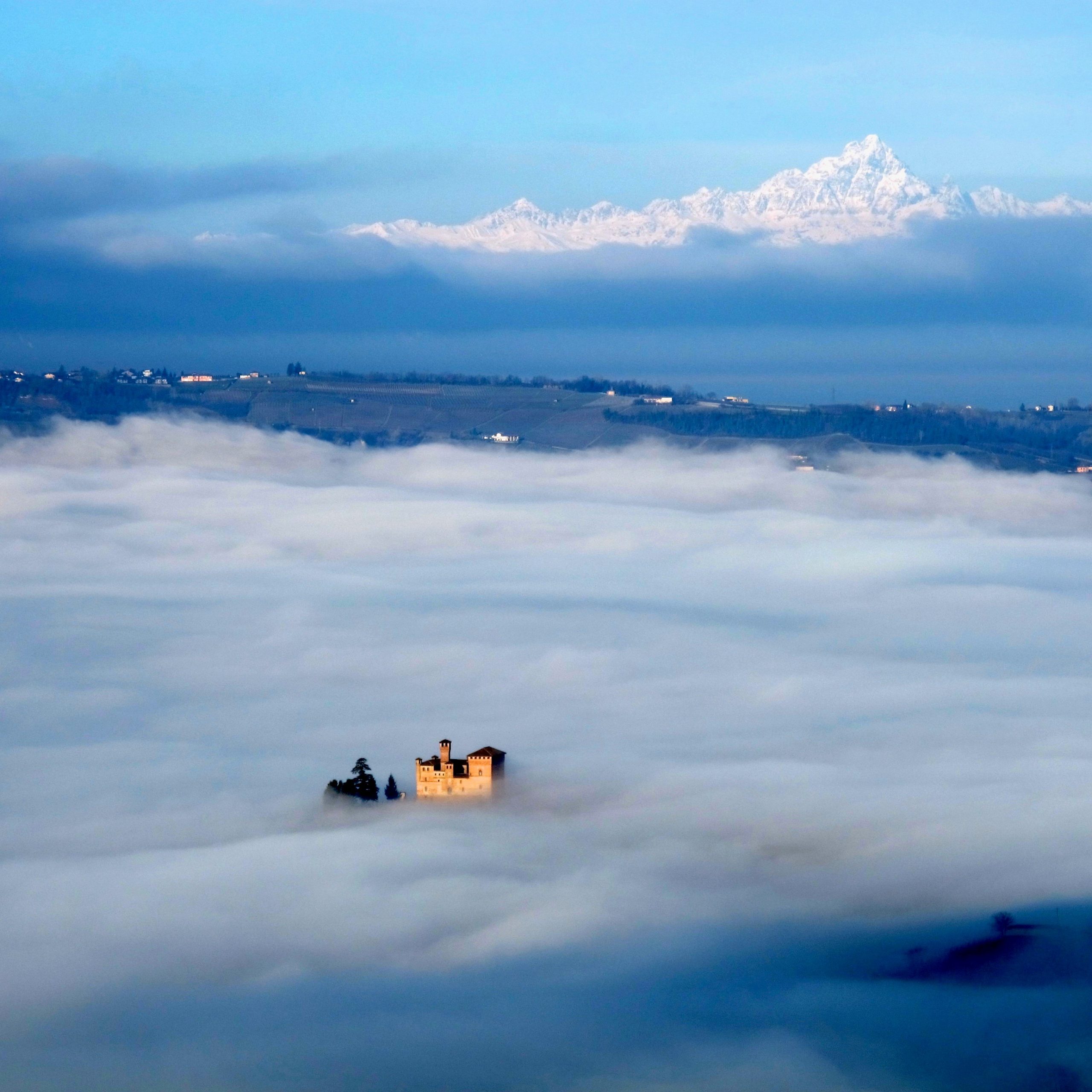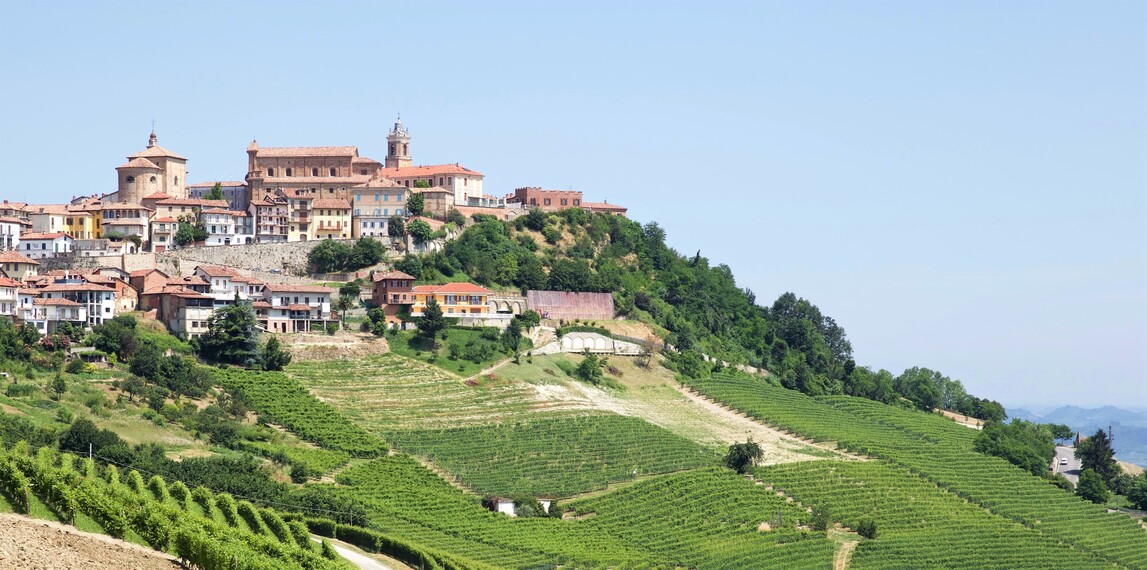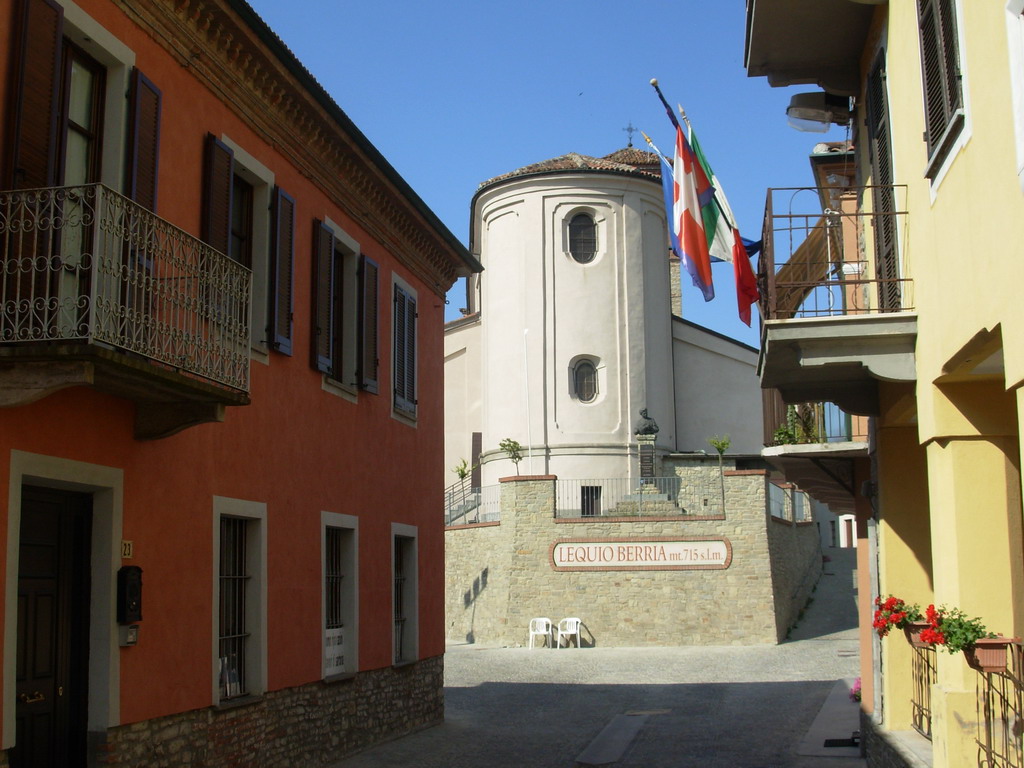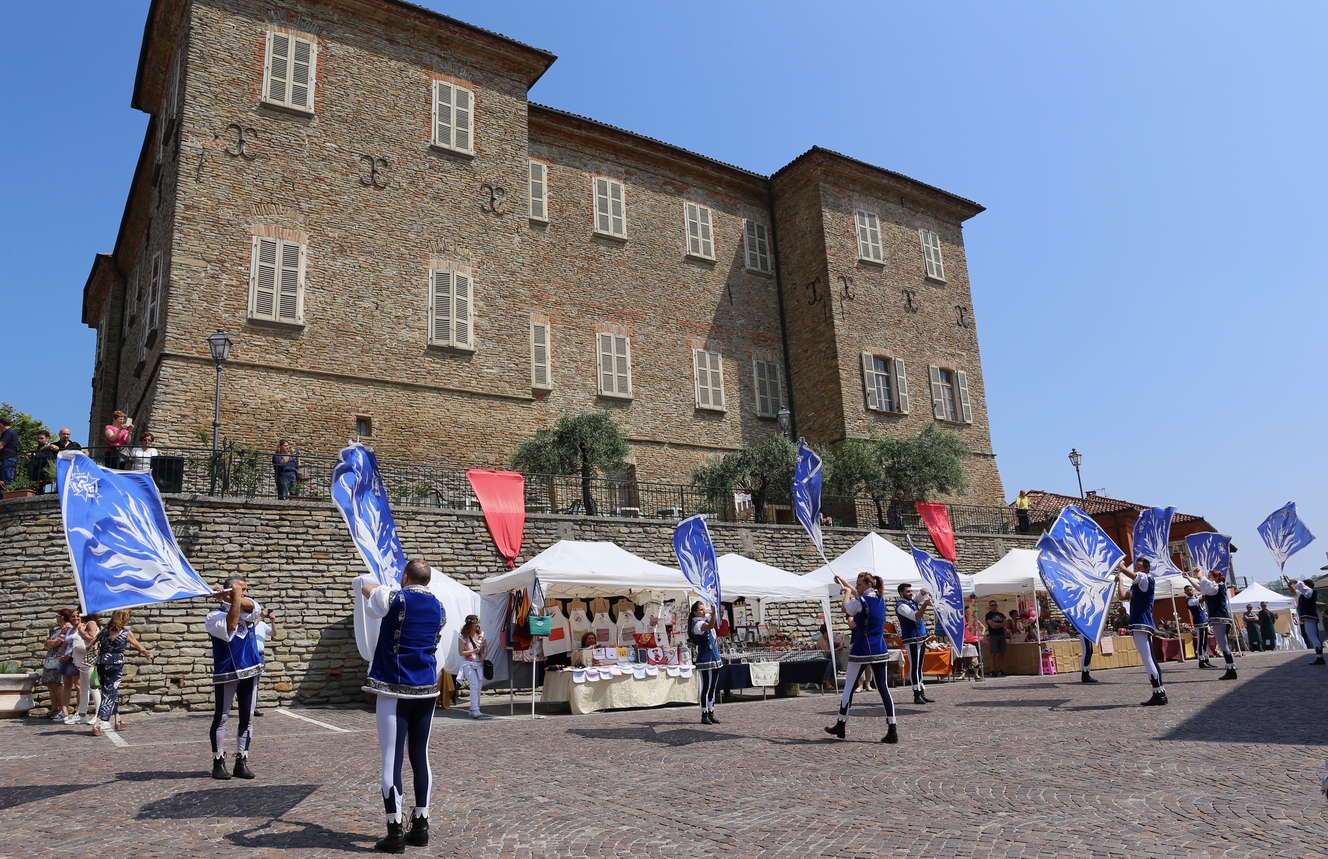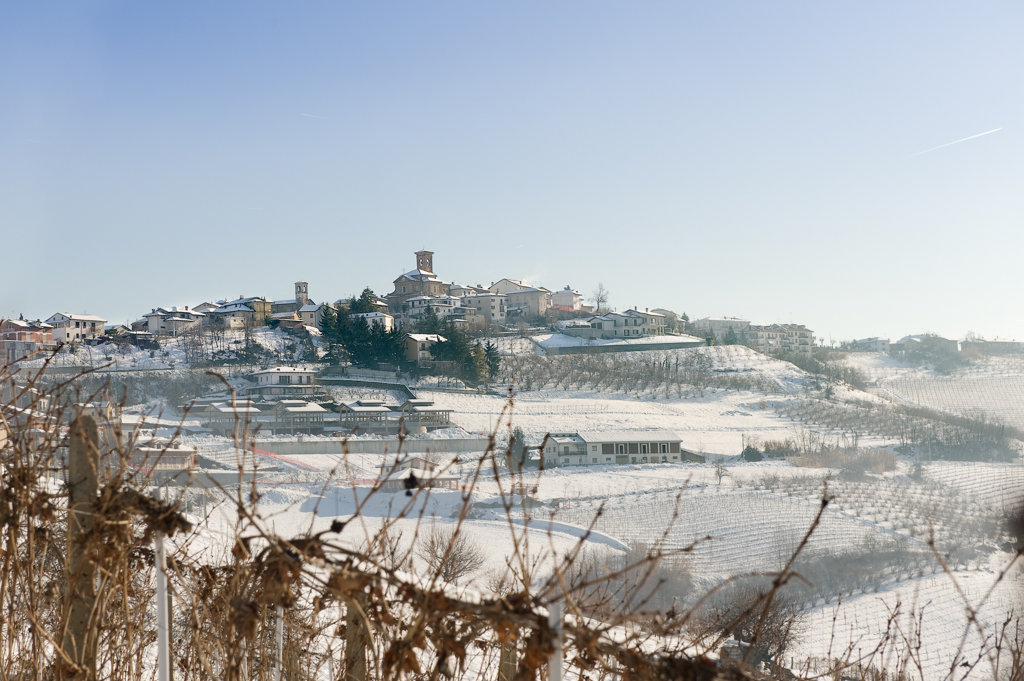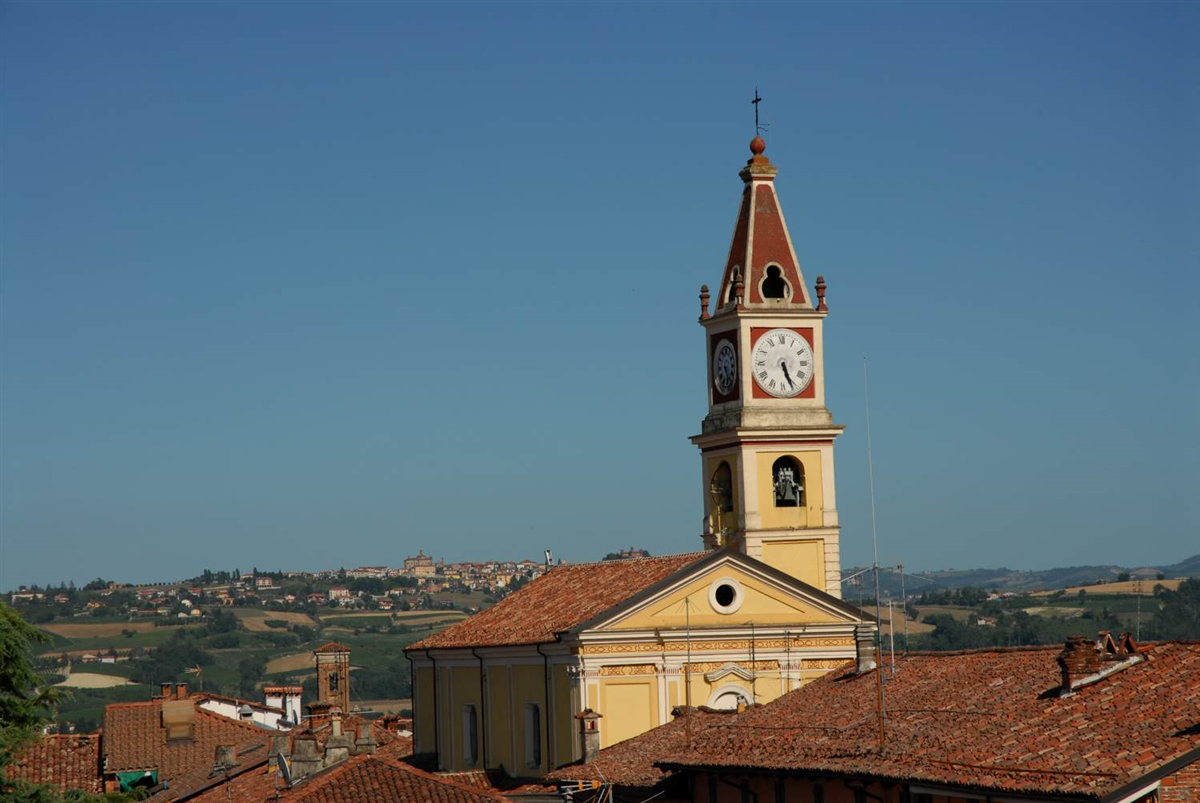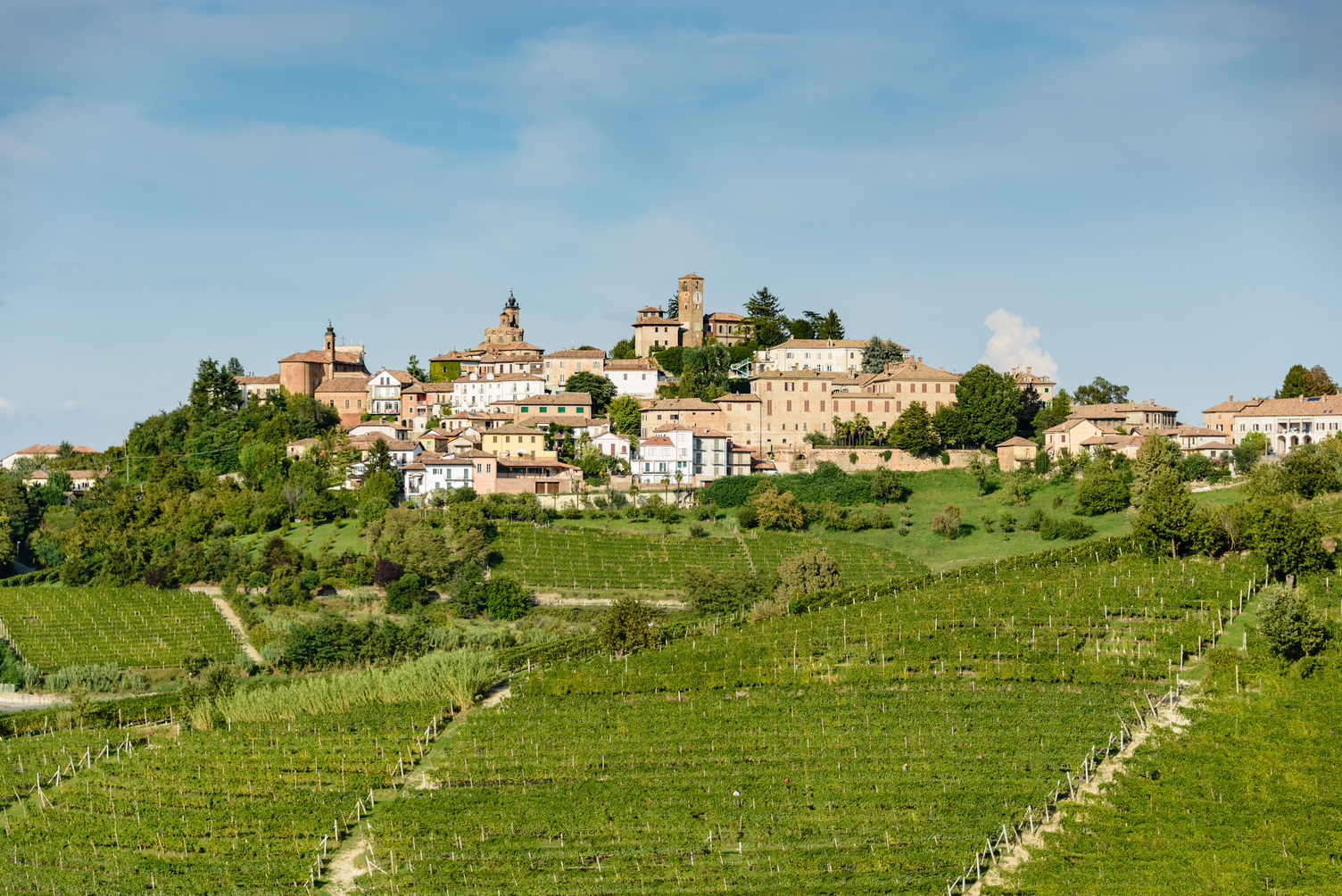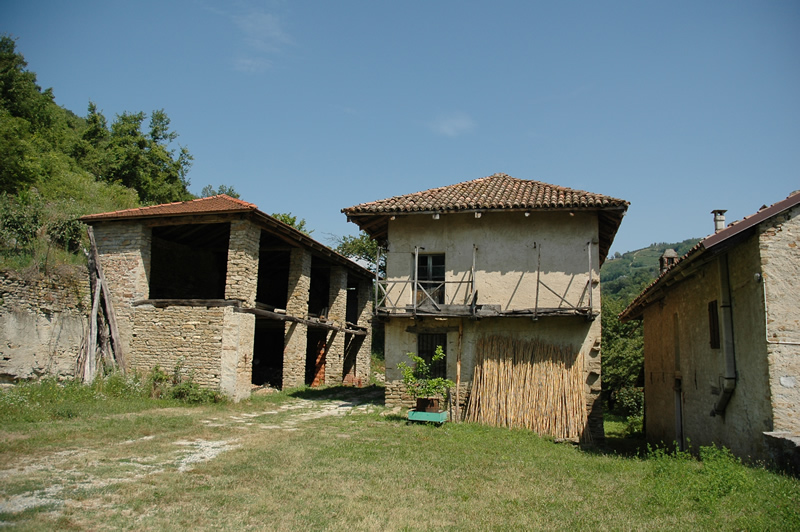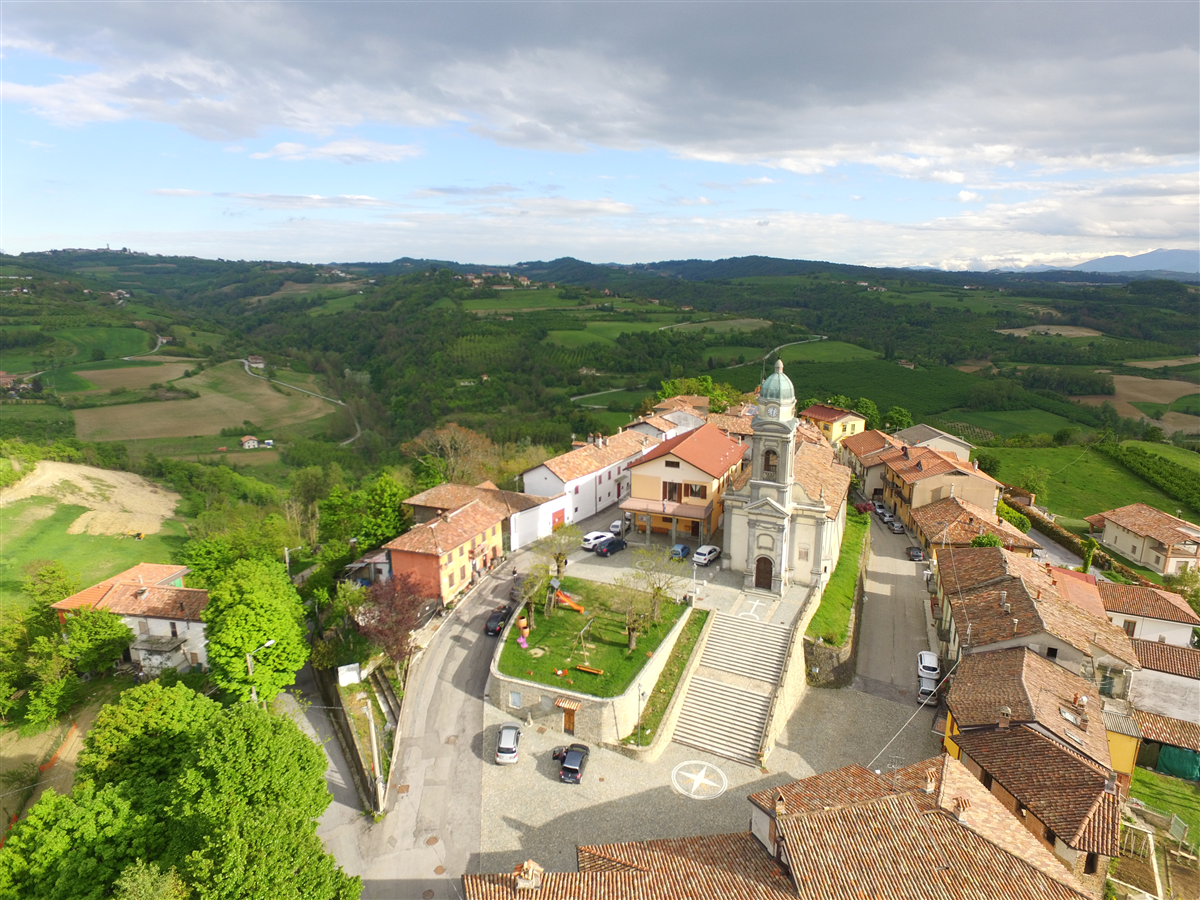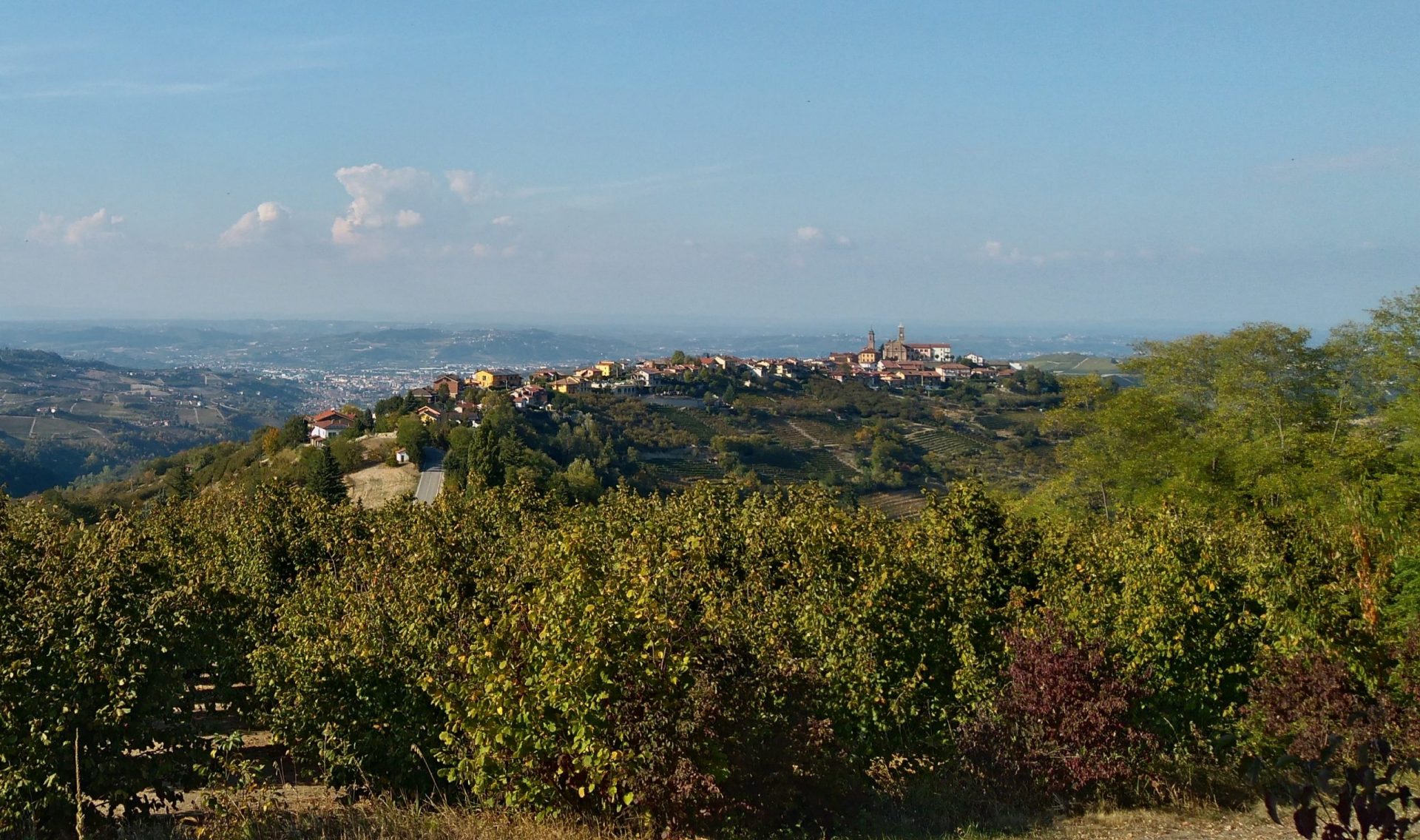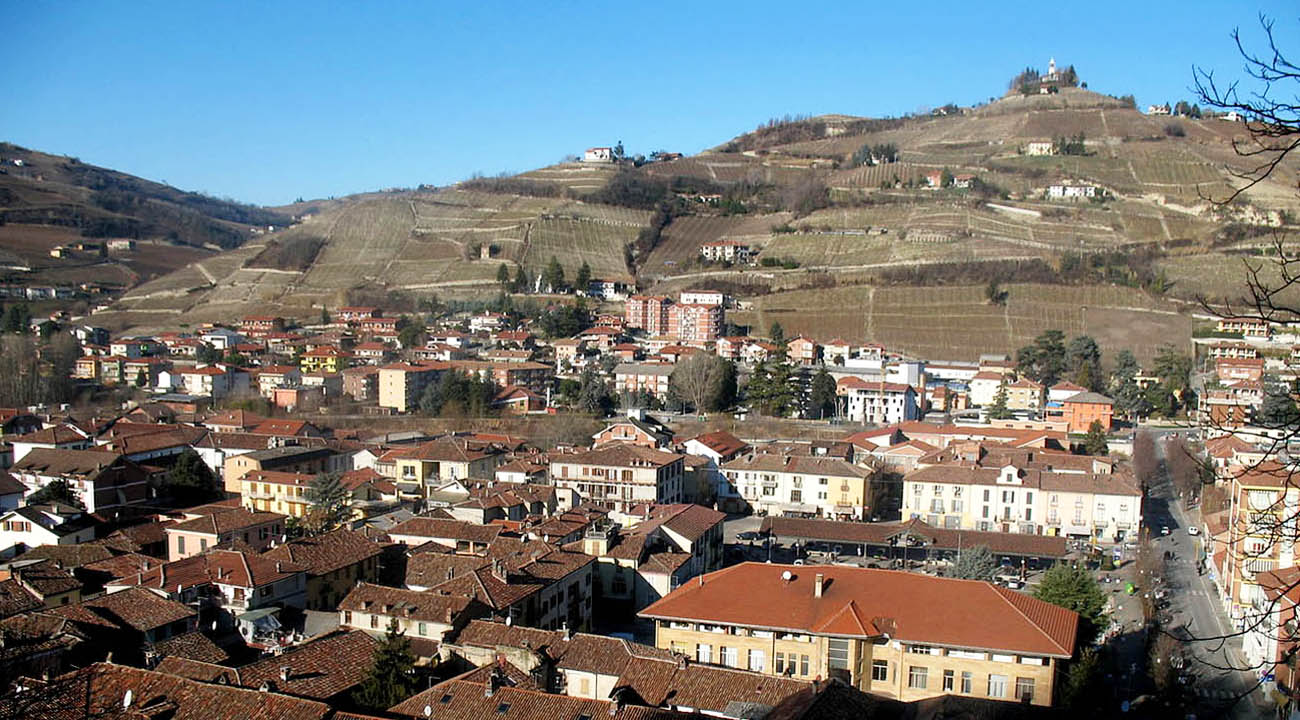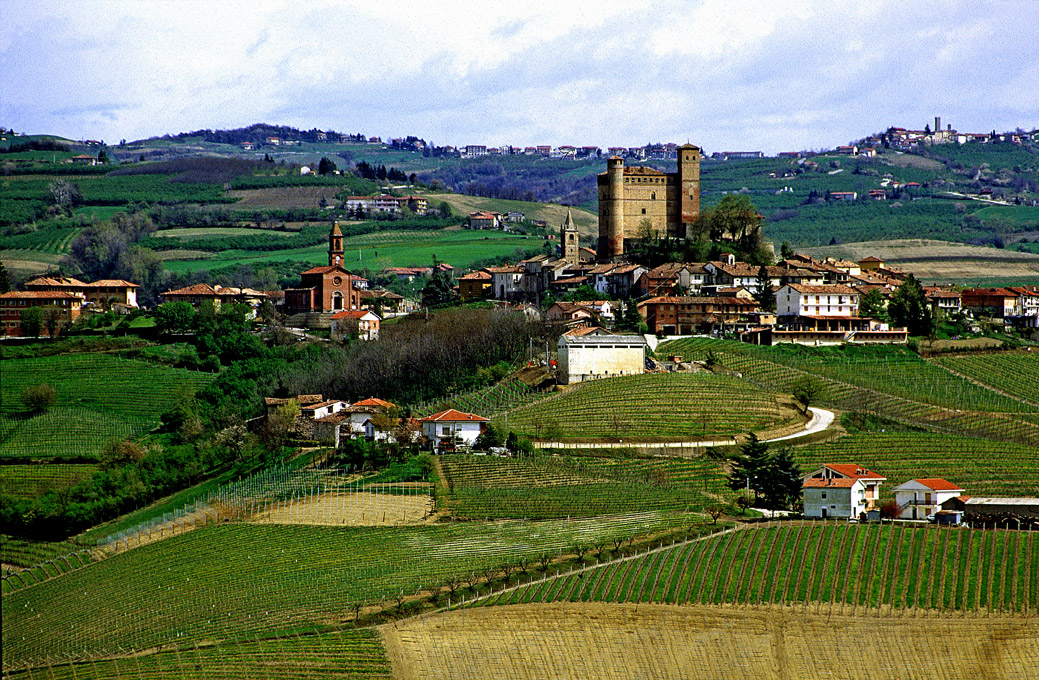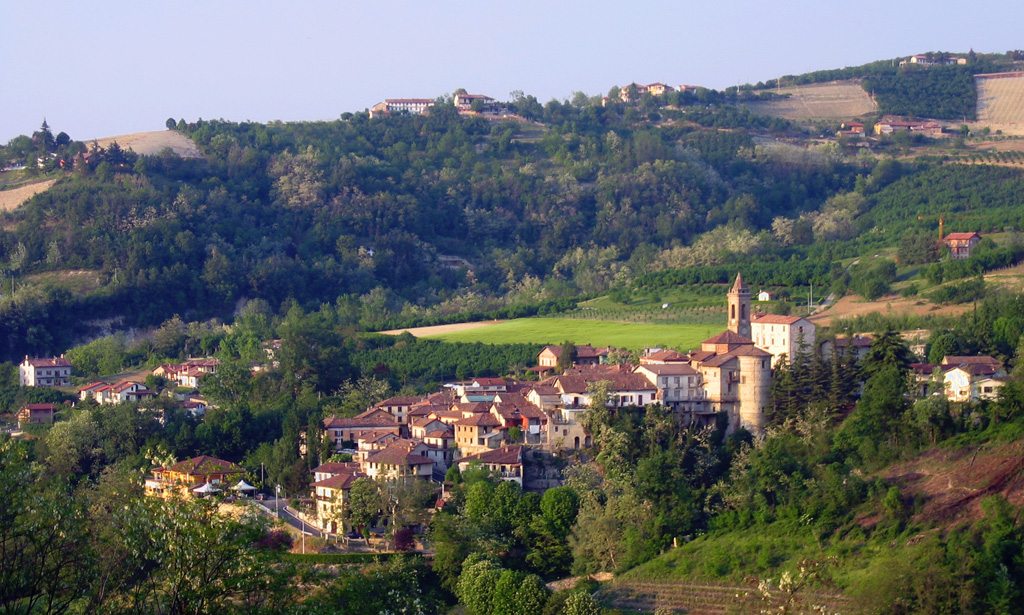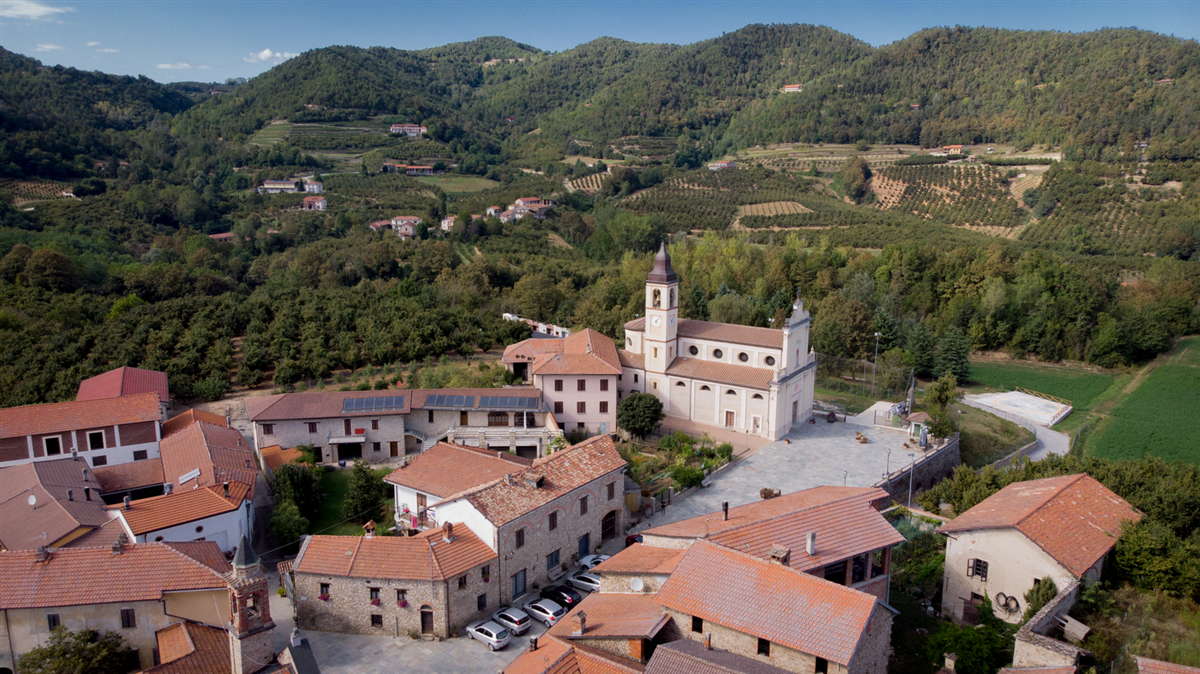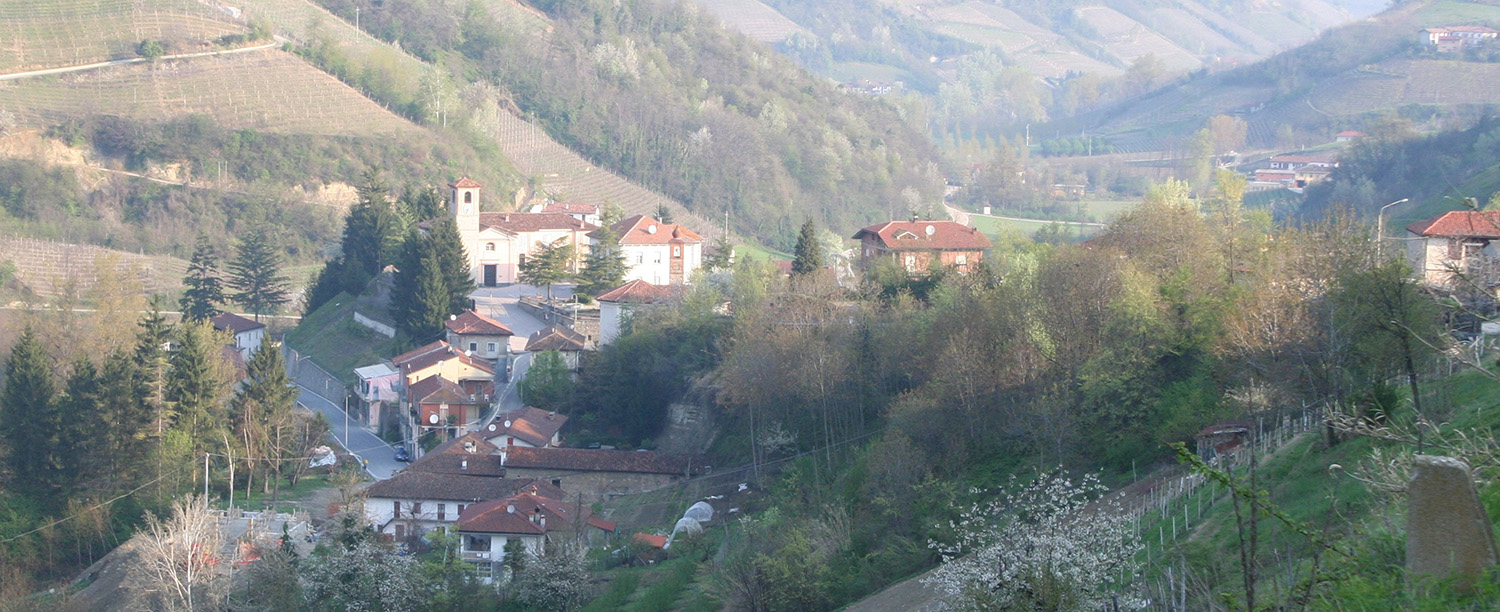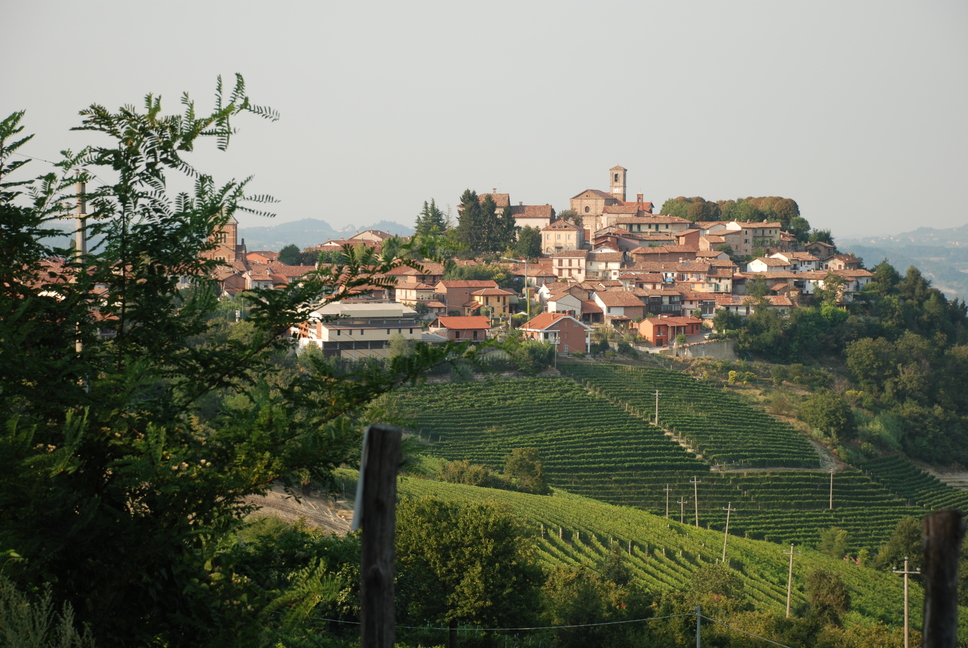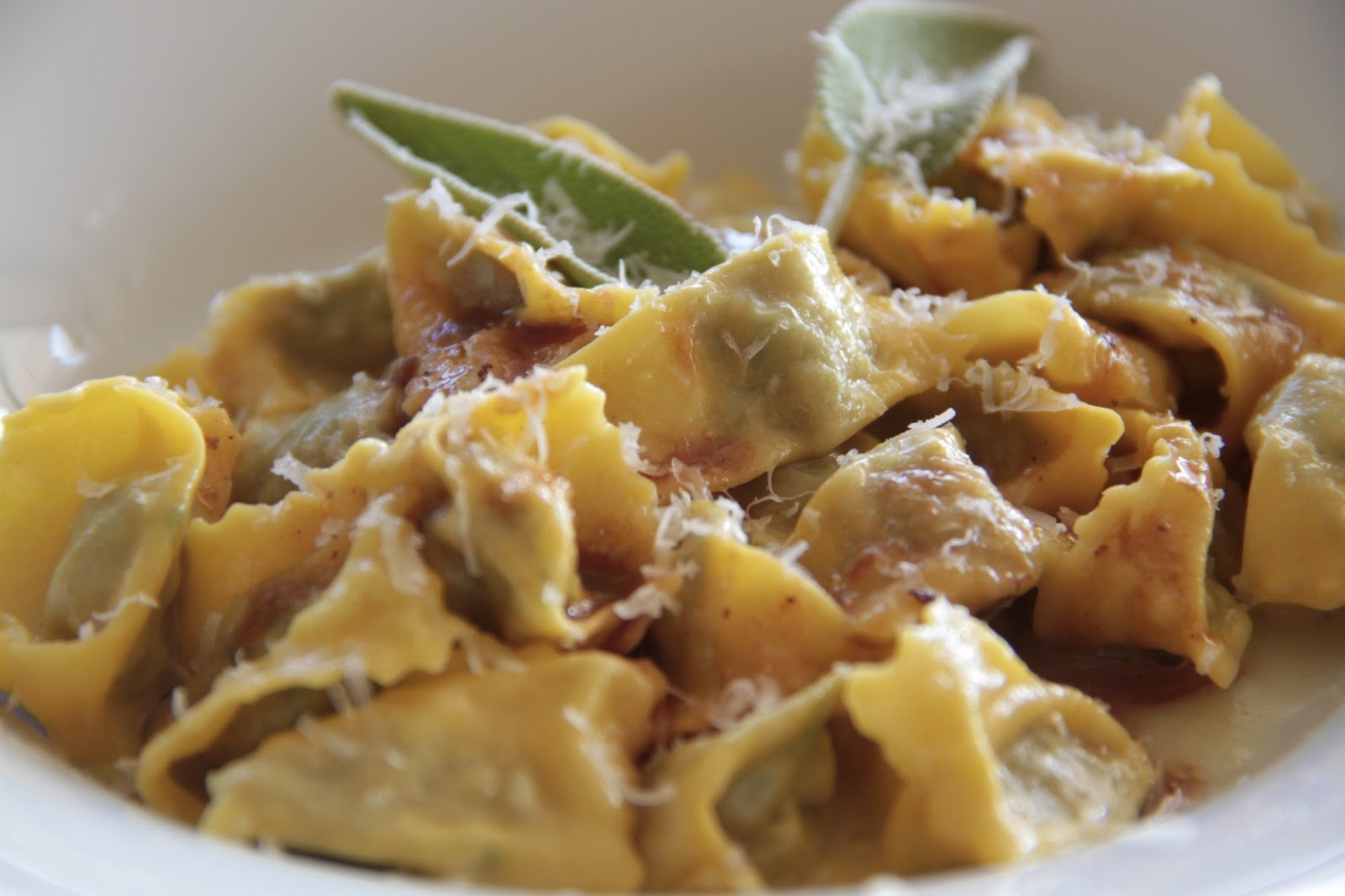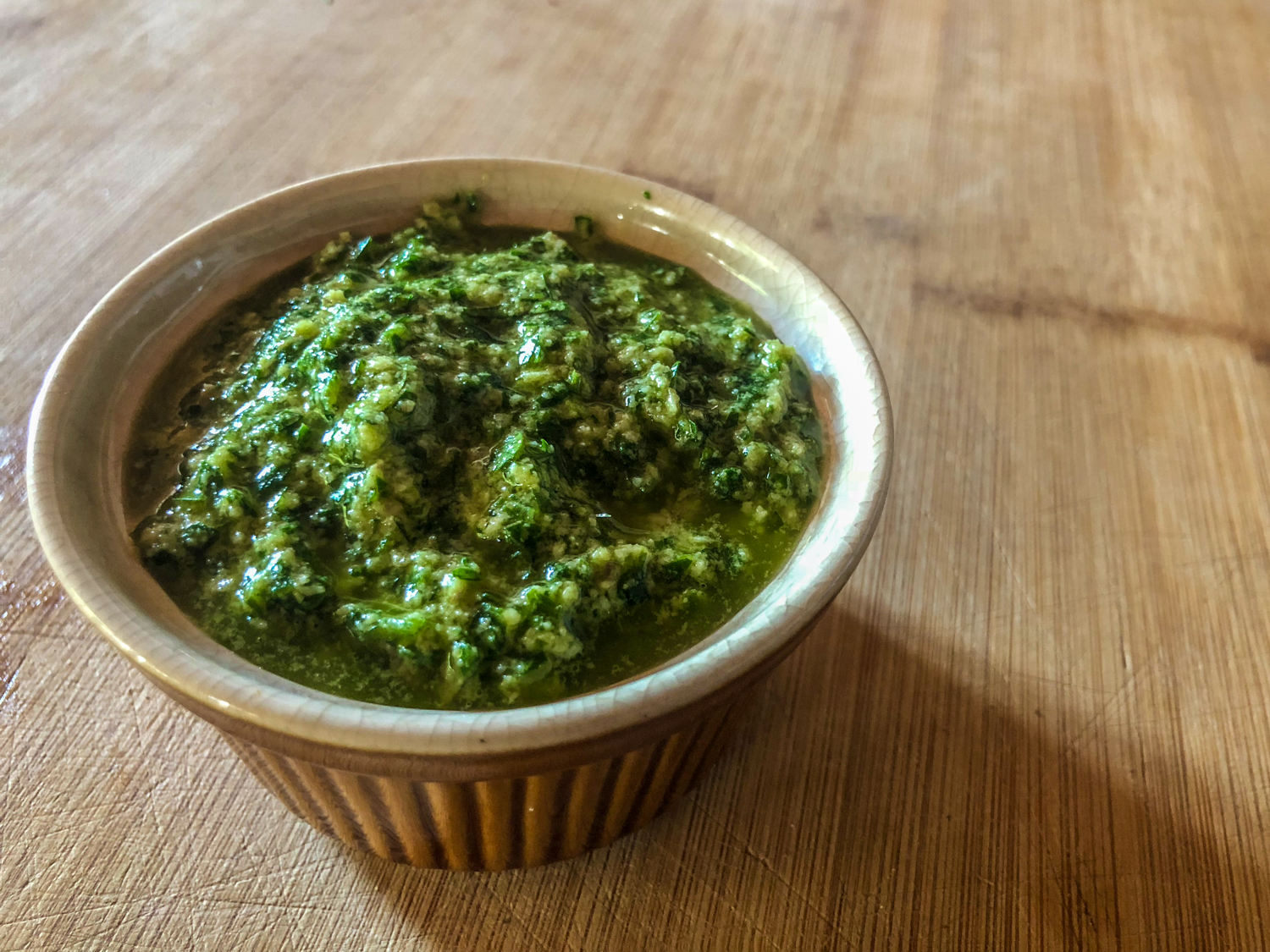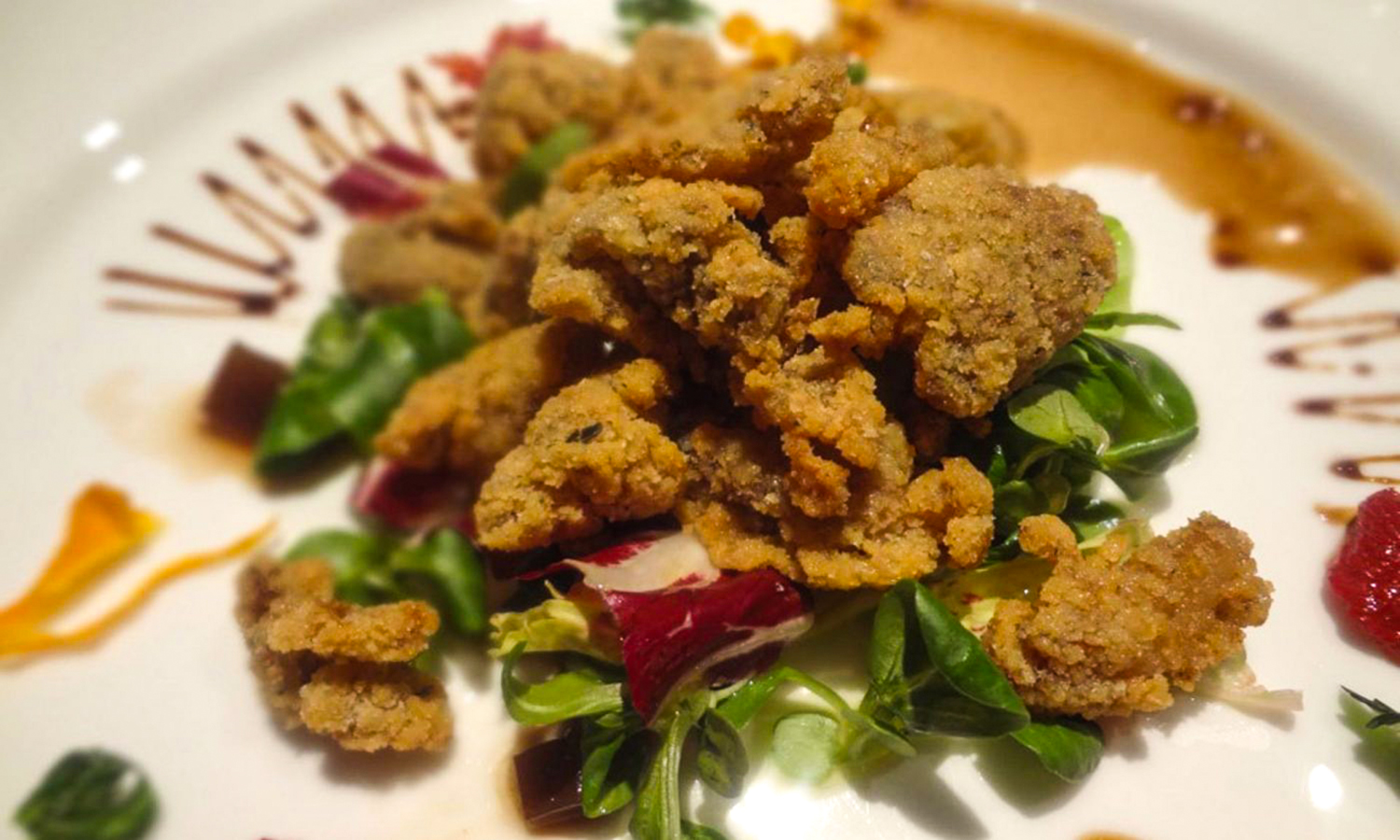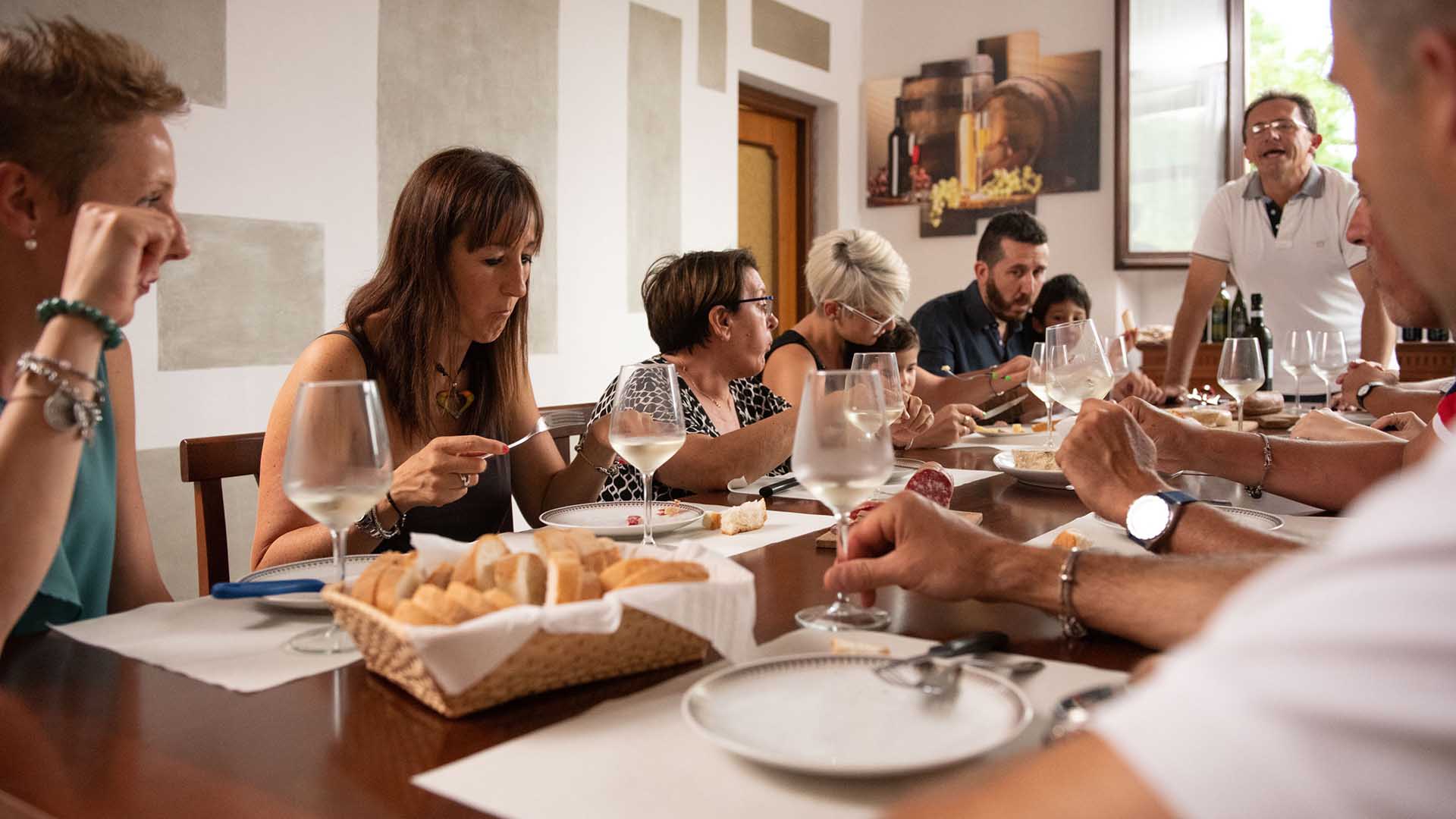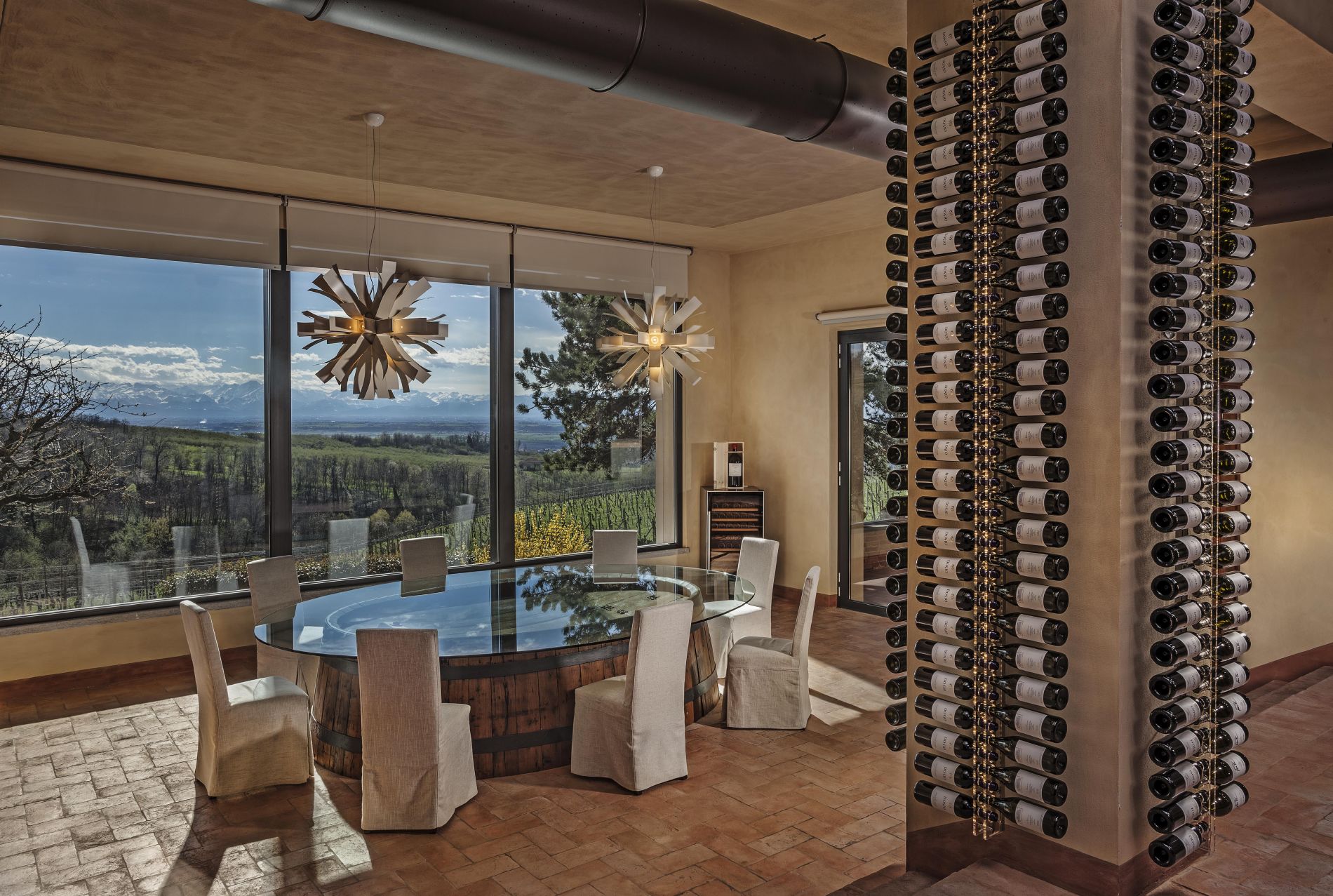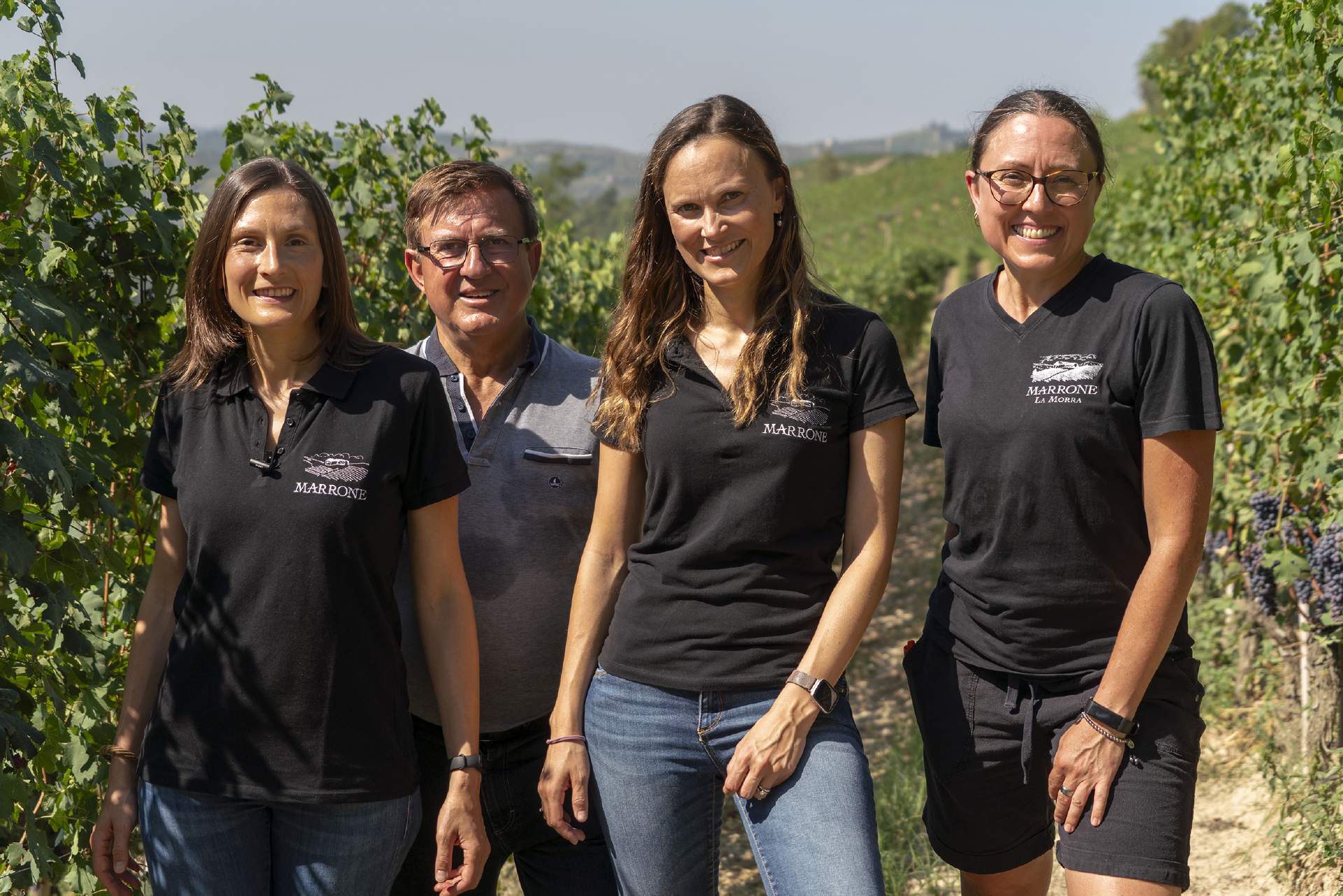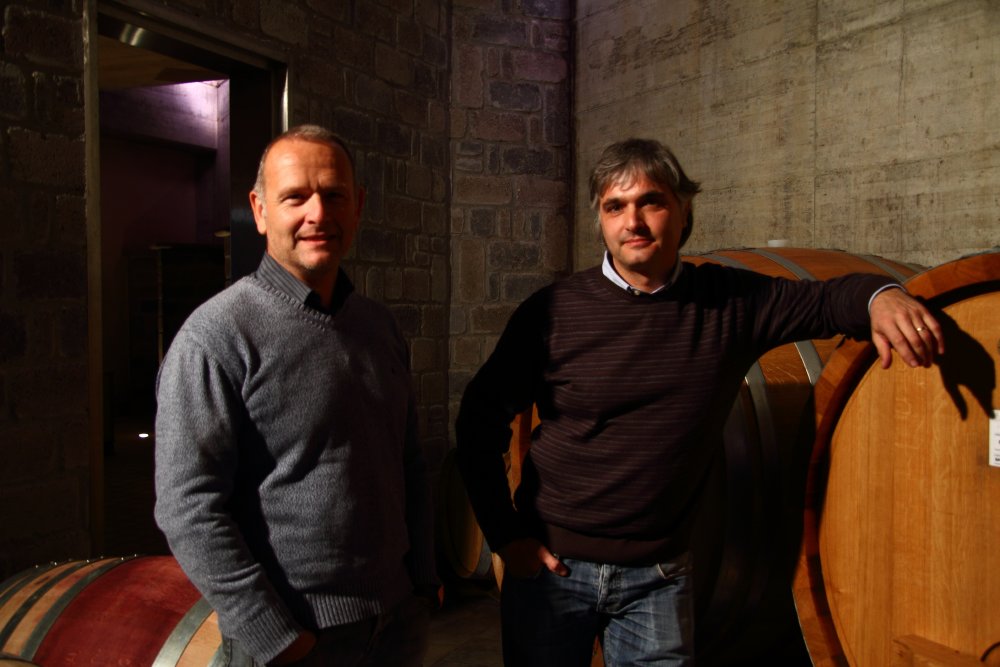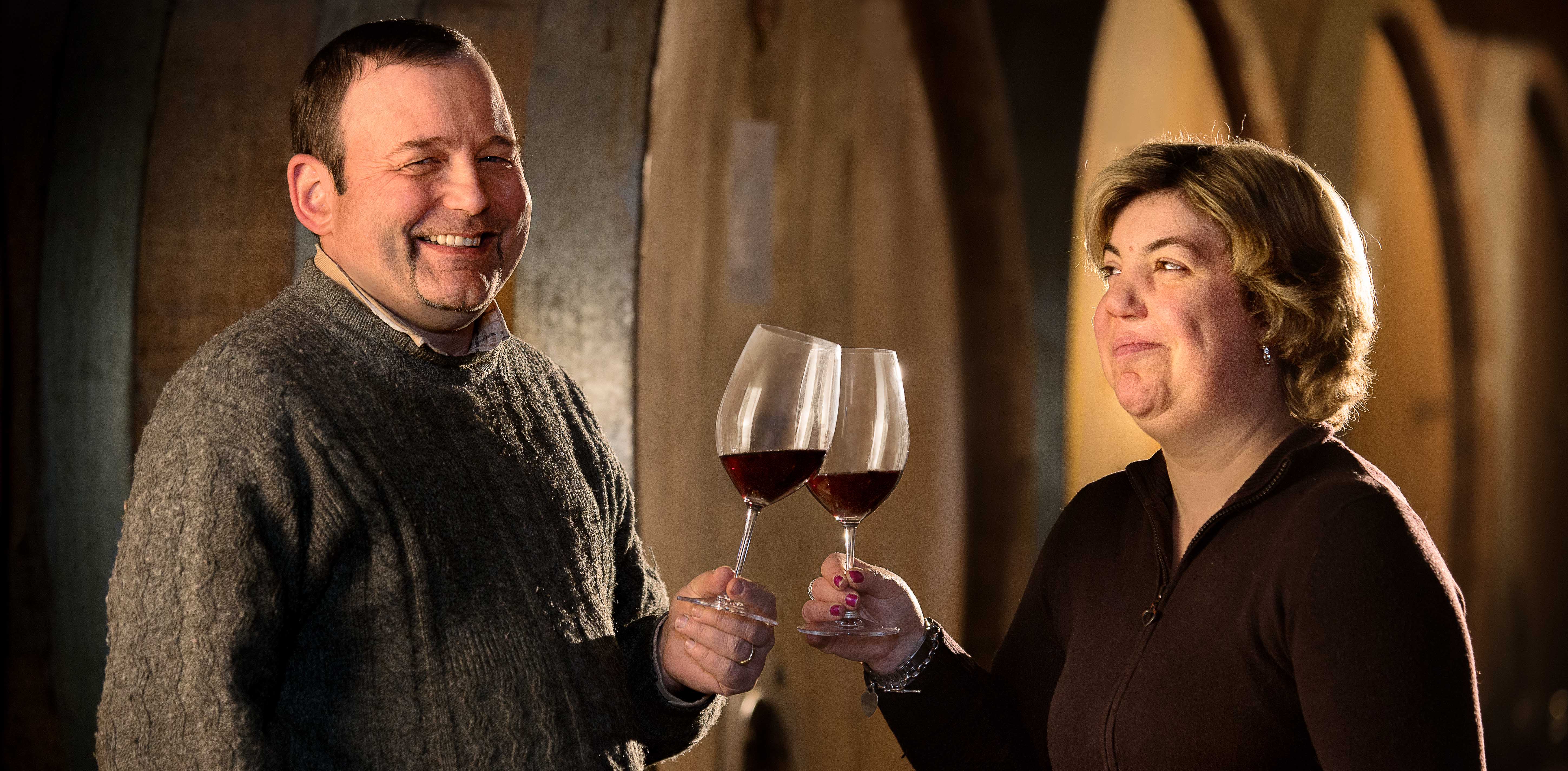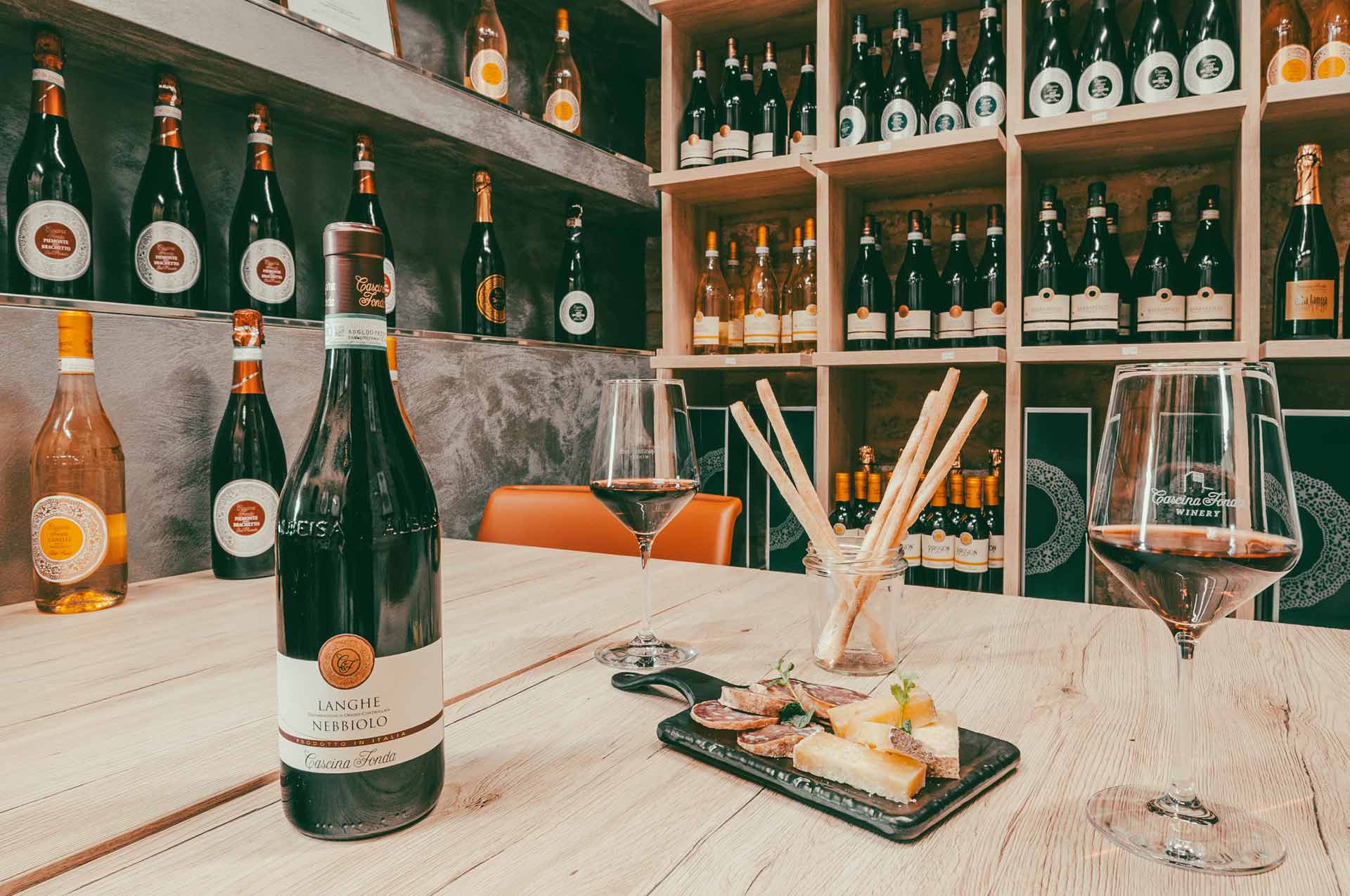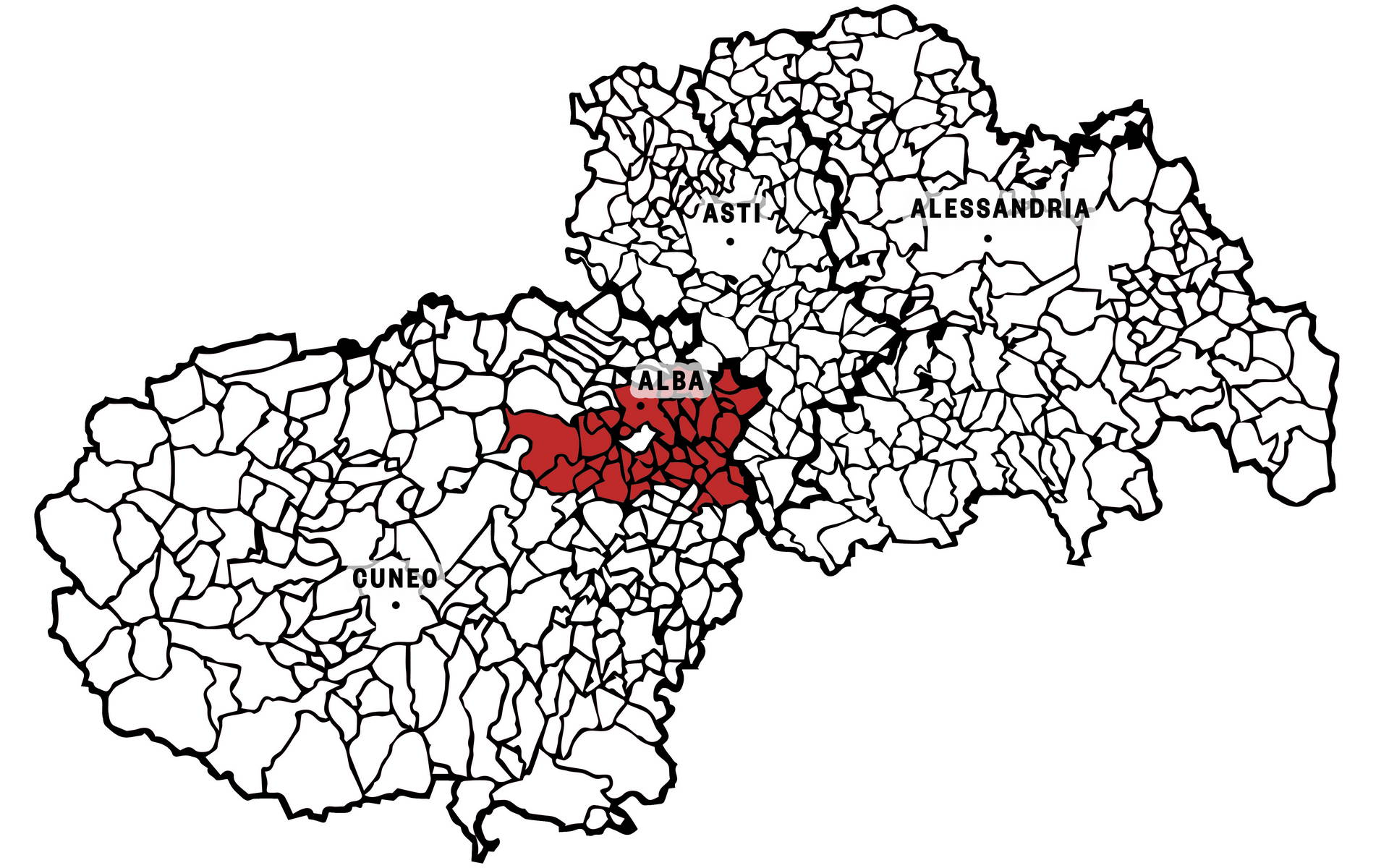
Dolcetto d’Alba DOC
Dolcetto is the most typical wine of the Langhe.
Well beyond the postwar period, it was the undisputed ruler of the hills to the right of the Tanaro, widespread in the areas around Alba and also in the Alta Langa. It was-and in some ways still is-the wine of tradition, the one experienced and “drunk” daily, with great pleasure and satisfaction.
Anyone who had a few rows around Alba planted dolcetto. Thanks to early ripening and low acidity, it was used as a meal grape and wine to show off on any occasion.
Less rare than Barolo, less ceremonious than Barbaresco, easier than Nebbiolo, Dolcetto suited the rustic life of the time, and that rusticity, in some ways, is the note that still makes it different today.
We must not make the mistake, however, of considering it a “simpleton.” Dolcetto is a demanding grape variety and its namesake wine a small masterpiece of balance between tannin and fruit, between pleasantness and affability.
This is how, after obtaining DOC status in 1974, Dolcetto d’Alba has continued to reap a fair amount of success, especially in its more complex and “intelligent” versions, in which it is not downgraded to the rank of “table wine” but treated with the respect it deserves: a great wine worthy of representing the Langhe in its most authentic and drinkable form.
Vines
Appellation
Color
Type
Min. alcohol
Variants
Established on
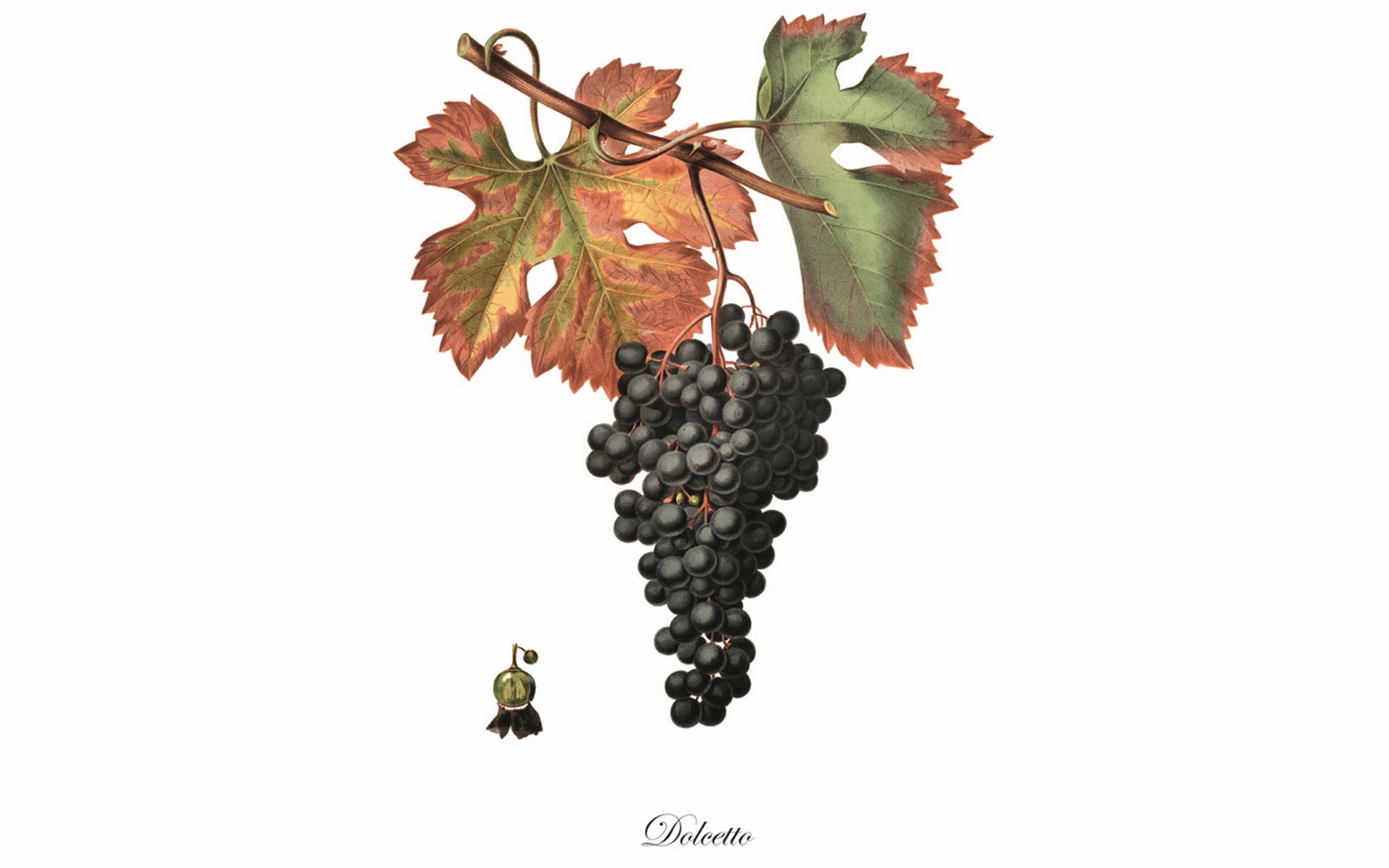
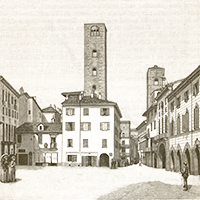
The history of Dolcetto d’Alba DOC
The wine of the daily table
The earliest historical information about the dolcetto grape variety comes from the archives of the Dogliani municipality.
Here, in the register of a session of August 28, 1593 it is established that: "Níuno ardischi di qua dalla festa di S. Mateo vendemmiare le uve et se qualcheduno, per necessità o altra sua stima, vorrà vendemmiar qualche Dozzetti o altre uve sarà tenuto a prendere licenza dal deputato... sotto pena della perdita delle uve." This is the first documented appearance of Dozzetto, or Dolcetto, indicating that the grape variety was popular in the Langhe area and held in such high regard that its harvesting had to be regulated.
The etymon brings us back to the original meaning of the term, which, contrary to how it sounds in Italian, refers to the dialectal duset or dosset, or "little hill bump" (although there are those who still espouse the idea that the word indicates the sweetness of the grapes when tasted).
Some scholars, however, speculate on a different origin. Citing one of Dolcetto's synonyms, namely "Ormeasco," as evidence, they claim that the grape variety was imported to Italy by the Saracens and cultivated starting in the 14th century in Ormea, a municipality straddling Liguria and Piedmont, by decree of the Marquises of Clavesana.
For more news about dolcetto, we have to jump to 1839. Giorgio Gallesio, author of the Italian Pomona, qualifies it as Vitis Aquaestatellaensis, from the Roman name for Acqui Terme, writing that: "Everything suggests that it originated in Monferrato" and that its cultivation and spread began around the year one thousand, with the repopulation of the hilly area stretching "from Mondoví to Novi."
"Doglianese," "Ormeasco," or "Acquese," the fact remains that Dolcetto rows developed mainly in the hills of the Langhe, from which it is likely it later spread to Monferrato. In the Alba area it became so popular that it surpassed Barolo and Barbaresco in notoriety, at least until after the war.
It was certainly the most cultivated grape variety, the wine of the daily table, the one families were most fond of. It spread widely in the Alta Langa only to be gradually abandoned. Not only because of the difficulty of cultivation, but also because it lacked any law of protection in defense of its name and quality. A void partly filled by obtaining the DOC in 1974, which had the merit of distinguishing Dolcetto dell'Albese from that of Diano, Ormea, Acqui Terme or Ovada.
Today the fate of Dolcetto d'Alba is uncertain. On the one hand, the rows are being leveled in favor of nebbiolo, whose notoriety is eroding many of the spaces dedicated to native Langhe grape varieties. On the other, some producers are investing in the quality of the appellation, helping to enhance its unique peculiarities: that vinous fragrance with a pronounced, pleasant bitterish background that make it an easy-drinking wine that is anything but banal.
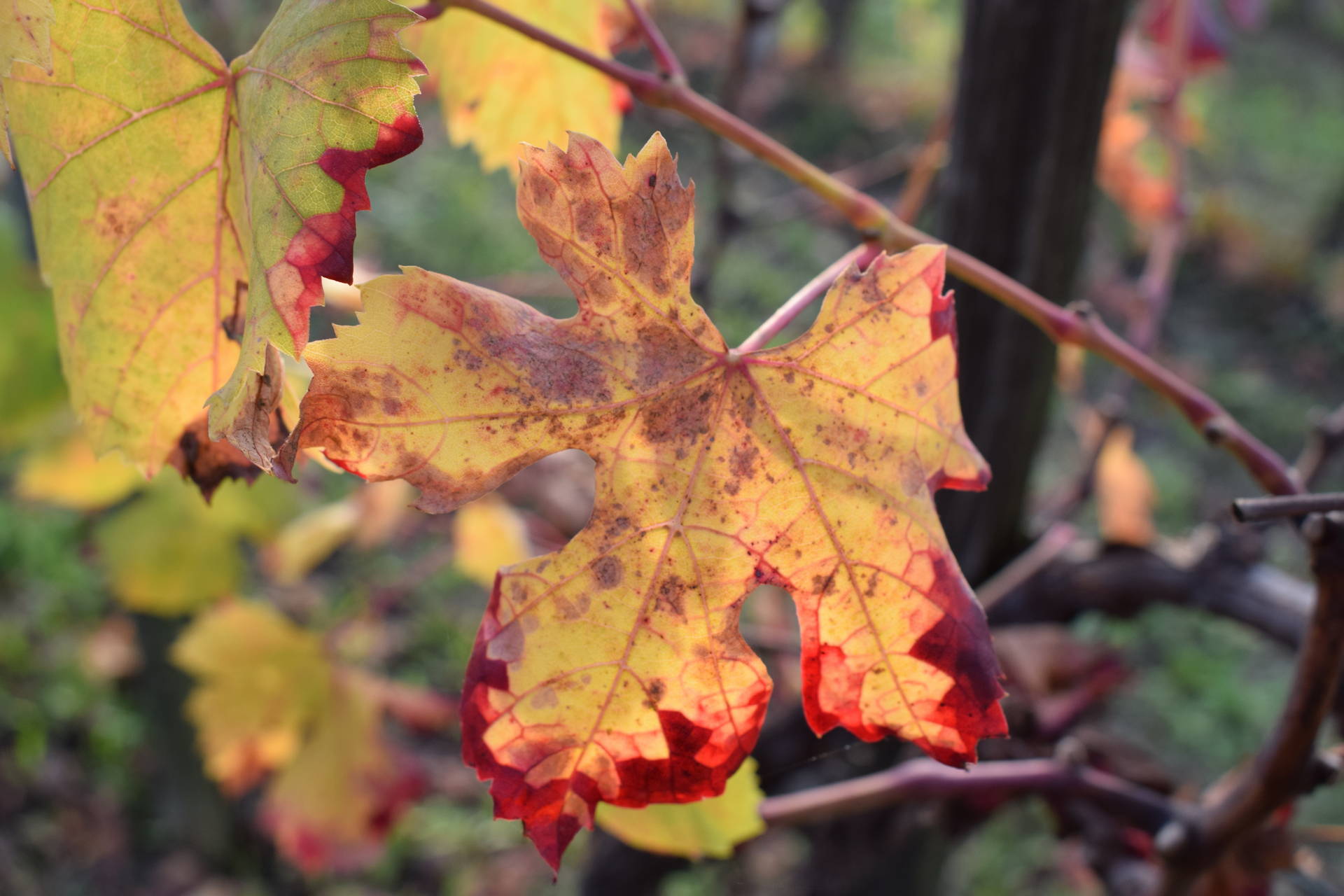
Dolcetto d’Alba DOC: Terroir
The Dolcetto d'Alba appellation stretches across the hills of 35 municipalities distributed in clusters around the city of Alba in the Langhe.
Roughly speaking, the district extends from Narzole to Santo Stefano Belbo on the West-East axis; and from Neive to Cortemilia on the North-South axis.
The vine-covered hills are almost all located on the right side of the Tanaro River and rest on soils of Miocene origin, dating back almost 70 million years.
Geologically, the soils of Dolcetto d’Alba can be divided into two areas.
The first is the eastern one, enclosed between the hills of Barolo and Barbaresco: characterized by gray-bluish clay marls, it gives denser and more structured wines.
The second proceeds in the direction of the Belbo Valley. It presents looser, calcareous and arenaceous soils that transfer into more fragrant, fine and light wines.
Preferred Altitude
Preferred Soil
Crus / MGA
Dolcetto d’Alba DOC: Vines
The Dolcetto d’Alba DOC is a single varietal wine, and therefore can be made exclusively by Dolcetto grapes
The bunch of Dolcetto is a long pyramid in shape, and the grapes are round, with a blue-black skin. The fruit ripens in mid September. you can read more about Dolcetto here.

Dolcetto d’Alba DOC: Features
A harmonious, rightly tannic wine with a slight almond taste that makes it perfect for the whole meal.
Dolcetto is truly the wine that can be brought to the table on any occasion thanks to its distinctive, not too alcoholic flavor, capable of pairing with virtually any dish.
The Superiore version, while maintaining the incredible ease of drinking, deepens the "blue" notes of this grape variety.
The red fruit becomes more full-bodied and veers toward jam and dark-skinned berries, enveloping the mouth with a delicate tannic note (which becomes sweet and soft when aged in wood) and a hint of spice.
Sight
Dolcetto d'Alba is a beautiful deep red color, intense and impenetrable to light, with some purplish hues.
Nose
Fruity notes prevail in the more immediate and younger versions.
The Superior version is loaded with hints of fruit in spirit, cherry, almond and ink.
Taste
The typical note of Dolcetto d'Alba is the almondy aftertaste and the right sensation of astringency given by the tannins, which clean the mouth and invite a new sip.
If the young version of Dolcetto d'Alba is all about fruit (plum, currant, blueberry, blackberry), the Superiore version becomes more elegant and austere, deepening the sometimes spicy, sometimes delicately mineral nuances.
Official regulation
Color
Perfume
Taste
Foam
Service
Serve in large ballon-shaped glasses at a temperature of 18° to 19° C.
Dolcetto d’Alba DOC: what to pair it with
Dolcetto d'Alba is truly a wine for the entire meal.
It goes well with stuffed pasta dishes, pastasciutte al ragù, red and white meats, and medium-aged cheeses.
It reaches heights of excellence with traditional Piedmontese dishes: polenta, boiled meats and bagna cauda.
But Dolcetto d'Alba does well with a simple salad, a savory pizza and a dish of pasta carbonara.
Recipes to pair with Dolcetto d’Alba DOC
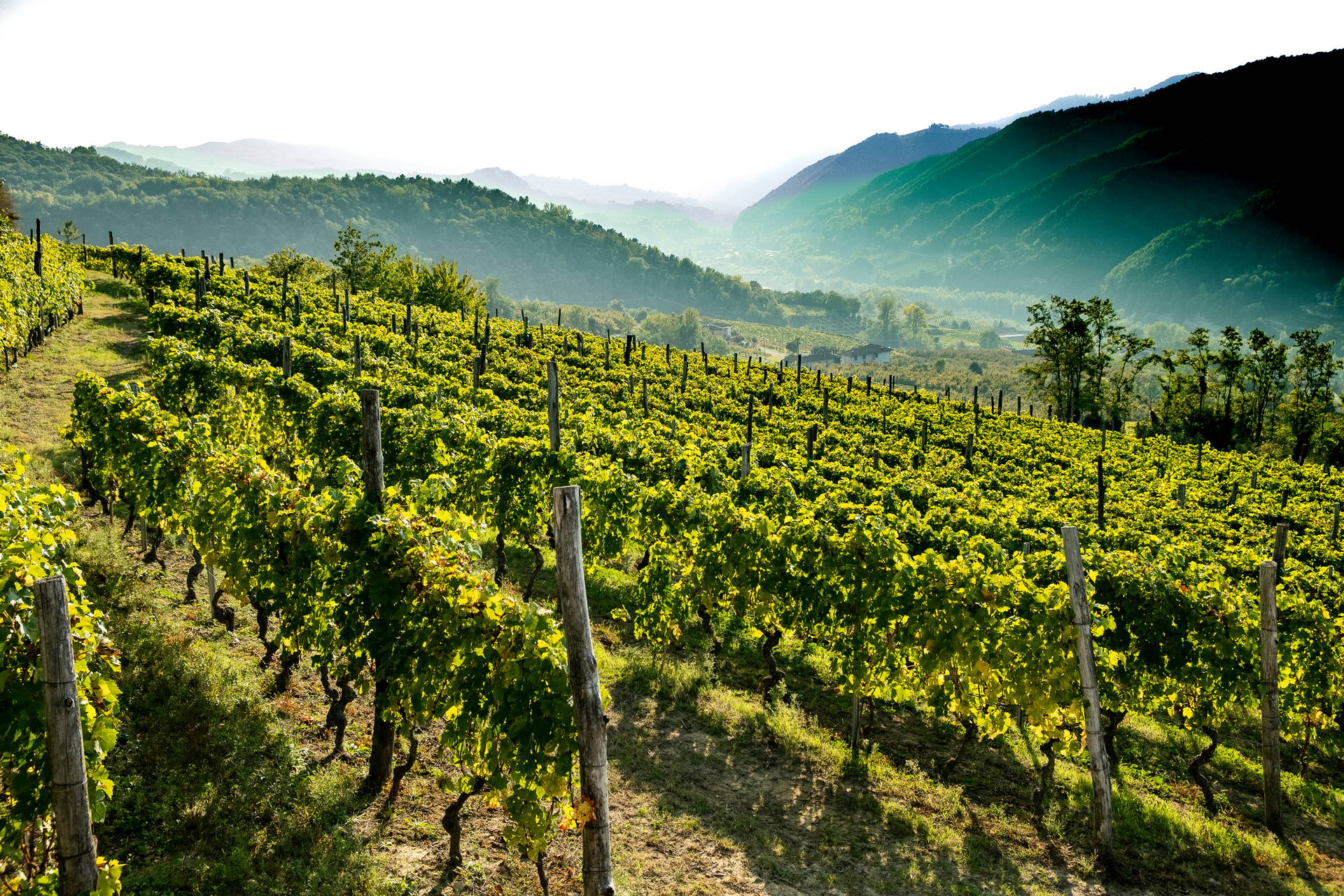
Dolcetto d’Alba DOC: Production
Dolcetto is one of Piedmont's most challenging indigenous grape varieties, marked by an extreme sensitivity and delicacy that is as evident in the vineyard as it is in the cellar.
From an agronomic point of view, it suffers from temperature changes, excessive fertilization and, in general, cold and wet soils.
Particular attention should be paid to winemaking, as the clusters are small and very rich in polyphenols, those natural compounds found in the pomace and grape seeds that give the organoleptic characteristics to the wine: color, smell, taste, astringency.
The ratio of solid to liquid parts is therefore high and, especially during maceration-fermentation, extreme delicacy is required. The risk is to extract too many tannins (dolcetto has on average three pips per berry versus two in other varieties) resulting in the development of vegetal aromas, pronounced bitterness and excessive astringency.
Dolcetto grapes are usually harvested after mid-September. After crushing and destemming, they are mash in stainless steel vats, where maceration begins, accompanied by alcoholic fermentation. Many producers have adopted the technique of punching down and pumping over to seek an ennobling extraction.
The basic version of Dolcetto d’Alba is aged in steel and released young, starting in the spring following the harvest.
The Superiore, on the other hand, must age for at least 12 months. The specifications do not specify the materials of the aging tanks. More and more producers have thus chosen a passage in wood, a feature that softens the harshness of Dolcetto and gives a decidedly deeper and longer-lived wine.
Time in wood
Time in bottle
Time to market
Grapes Yield
Meet the producers
Curiosities
Dolcetto is a widely planted grape variety throughout southern Piedmont.
It is a truly indigenous variety, suffice it to say that attempts have been made to plant it elsewhere but every experiment has been in vain.
Depending on the location of the vineyards, soils and different terroirs, it gives very different wines, which have been recognized by as many appellations.
The hills around Alba give Dolcetto d’Alba DOC, perhaps the most typical and traditional.
Those of Diano give birth to Diano DOCG (or Dolcetto di Diano), which had the foresight to be divided into Sorì (i.e., cru) and represents one of the top expressions of the type.
However, there is also Dogliani DOCG, which is the typical Dolcetto of the western Langhe.
There is Ovada DOCG, grown around the town of the same name and aged for at least 12 months, Dolcetto d’Asti and Dolcetto d’Acqui.
Finally, there are more “extensive” and less localized versions of Dolcetto. There is Langhe DOC Dolcetto, grown over a vast area between the Langhe and Roero, Dolcetto dei Colli Tortonesi, Monferrato Dolcetto, Dolcetto del Pinerolese and Dolcetto d’Ovada (not to be confused with Ovada DOCG, which is the Superiore version).
To be fair, there was also a rare Dolcetto from Langhe Monregalesi, which, fortunately, with the 2011 regulations was merged with Dogliani DOCG, making life easier for consumers!



































